Survivors Faced Hell on Earth and Went Days Without Water as These Deadliest Hurricanes Raged On!
17 Oct 2024News about Hurricane Milton recently shocked people around the world as it struck Florida, leaving a path of destruction in its wake. It unleashed maximum sustained winds of 120 mph and triggered severe flooding, especially in the Tampa area, where at least 17 fatalities have been reported! Experts have noted that Milton could be one of the most destructive hurricanes of the century, paralleling the devastation caused by past storms like Hurricane Katrina, which remains the deadliest hurricane of the 21st century. Today we will talk about the most devastating hurricanes, some of which have obliterated entire cities!
The Great Galveston Hurricane (1900)
The Galveston Hurricane remains the deadliest hurricane in U.S. history. Striking Texas, this massive storm killed an estimated 8,000 people, though some reports suggest the toll could have been even higher.
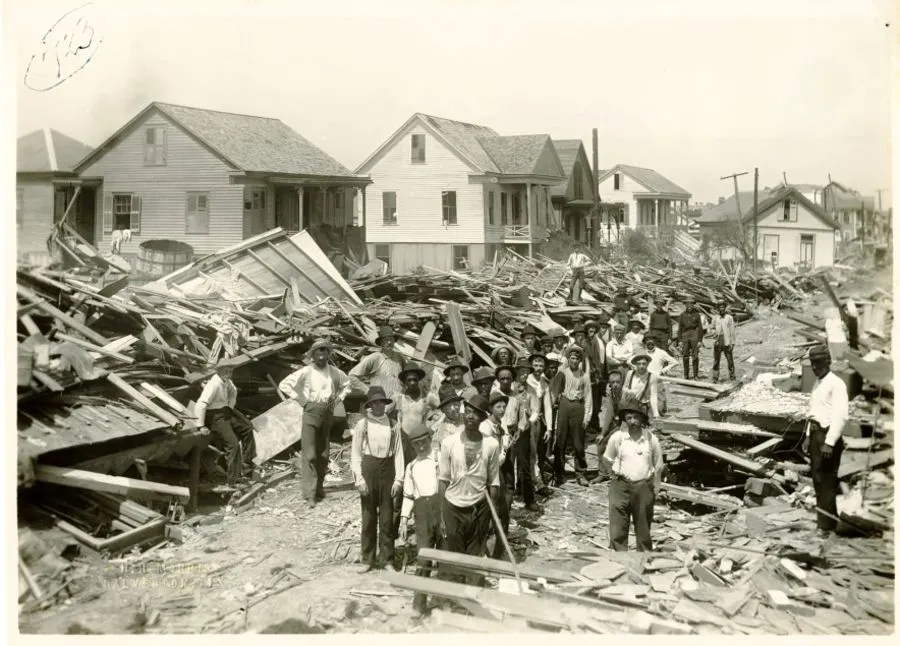 @Galveston Photographic Subject Files: Storm of 1900. Rosenberg Library, Galveston, Texas.
@Galveston Photographic Subject Files: Storm of 1900. Rosenberg Library, Galveston, Texas.
The island of Galveston, then a bustling port city, was almost entirely flattened, with winds exceeding 140 mph. Despite efforts to evacuate, many residents were caught off guard.
The Okeechobee Hurricane (1928)
In 1928, Florida was devastated by a Category 4 hurricane that caused Lake Okeechobee to overflow, flooding the surrounding areas.
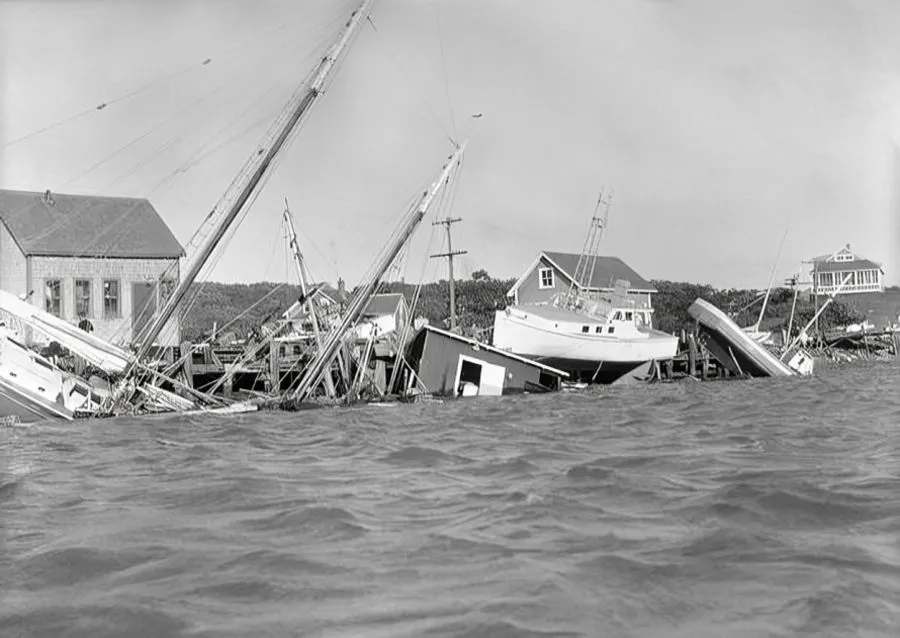 @buntingsbeachblog.com
@buntingsbeachblog.com
Over 4,000 people, mostly migrant farmworkers, perished in the floods, making it one of the deadliest hurricanes in U.S. history. Many of the victims were buried in mass graves. It was just a terrible disaster!
The Labor Day Hurricane of 1935
Forming in the Atlantic, it quickly intensified into a catastrophic Category 5 storm, boasting maximum sustained winds of 185 mph. The death toll was staggering, with estimates of around 600 fatalities, many of whom were World War I veterans living in labor camps that were obliterated by the storm.
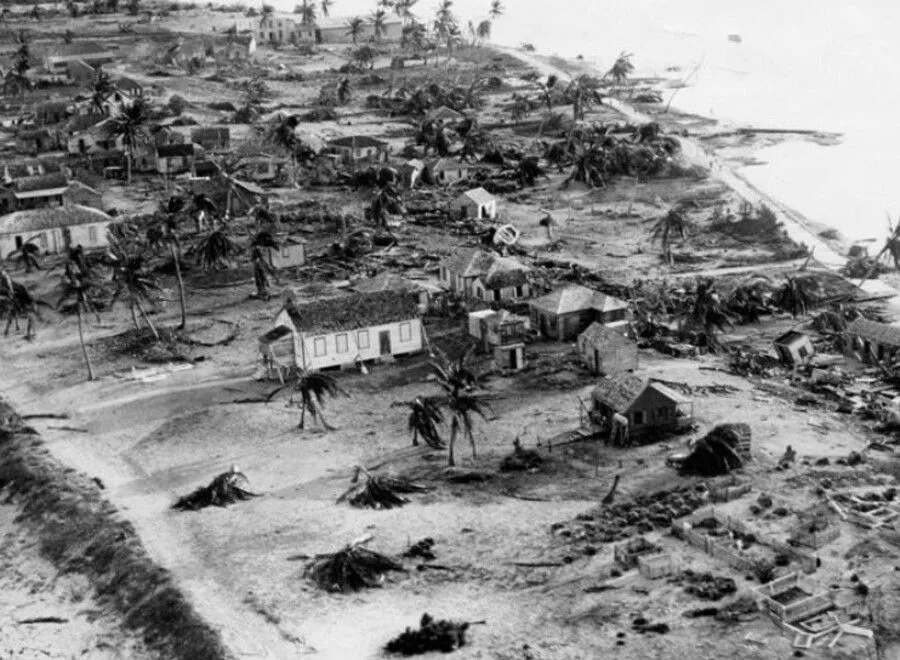 @ historymiami/Instagram.com
@ historymiami/Instagram.com
The sheer scale of the disaster left the land unrecognizable, as buildings were flattened, trees uprooted, and storm surges reached up to 20 feet. The damages were estimated at approximately $6 million, a colossal figure for that time.
The Long Island Express (1938)
The 1938 Long Island Express was a fast-moving hurricane that took the East Coast by surprise. With wind speeds up to 120 mph, it leveled forests, destroyed thousands of homes, and caused significant flooding across Long Island and New England.
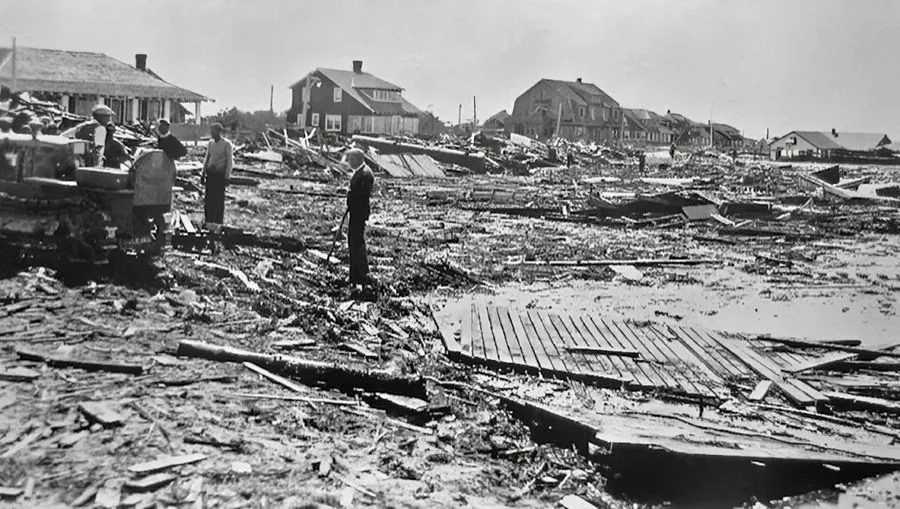 @Wikimedia Commons
@Wikimedia Commons
Over 700 people lost their lives. The hurricane also left a lasting impact on the landscape, with downed trees and altered coastlines still visible today.
Hurricane Hazel (1954)
Hurricane Hazel remains one of the worst natural disasters in Canadian history. After ravaging the Carolinas, it continued north, causing awful flooding in Toronto.
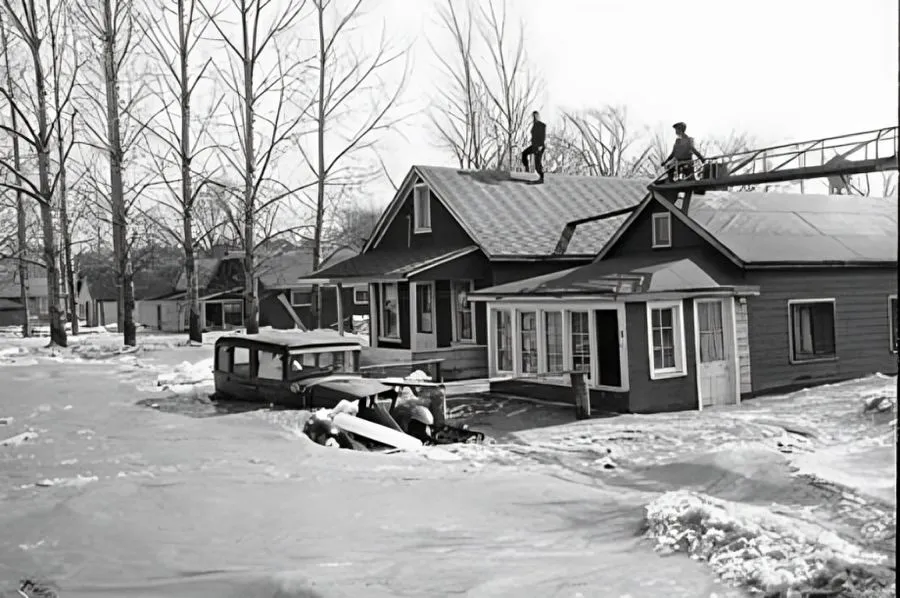 @thecanadianencyclopedia.ca
@thecanadianencyclopedia.ca
Over 80 people were killed in Canada, and more than 1,800 homes were destroyed. This was an unexpected and tragic incident for the country.
Super Typhoon Vera (1959)
Typhoon Vera, also known as the Isewan Typhoon, is Japan’s most destructive storm to date. Striking in 1959, Vera brought winds over 160 mph and caused severe flooding, landslides, and storm surges that wiped out entire towns.
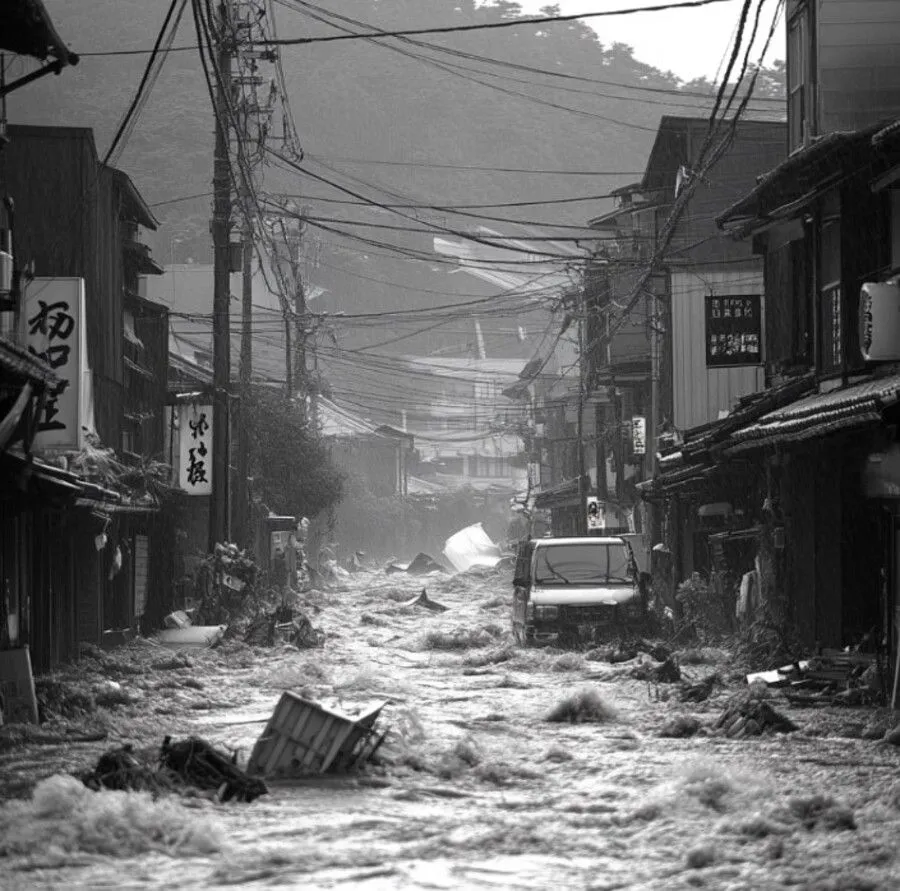 @ timesnow/Instagram.com
@ timesnow/Instagram.com
Over 5,000 people were killed, and hundreds of thousands were left homeless. People remained trapped and simply did not know where to run...
Hurricane Hattie (1961)
Hurricane Hattie struck Belize (then British Honduras) as a Category 5 storm, leveling much of the capital Belize City. The storm’s 160 mph winds and 12-foot storm surge left 10,000 people homeless.
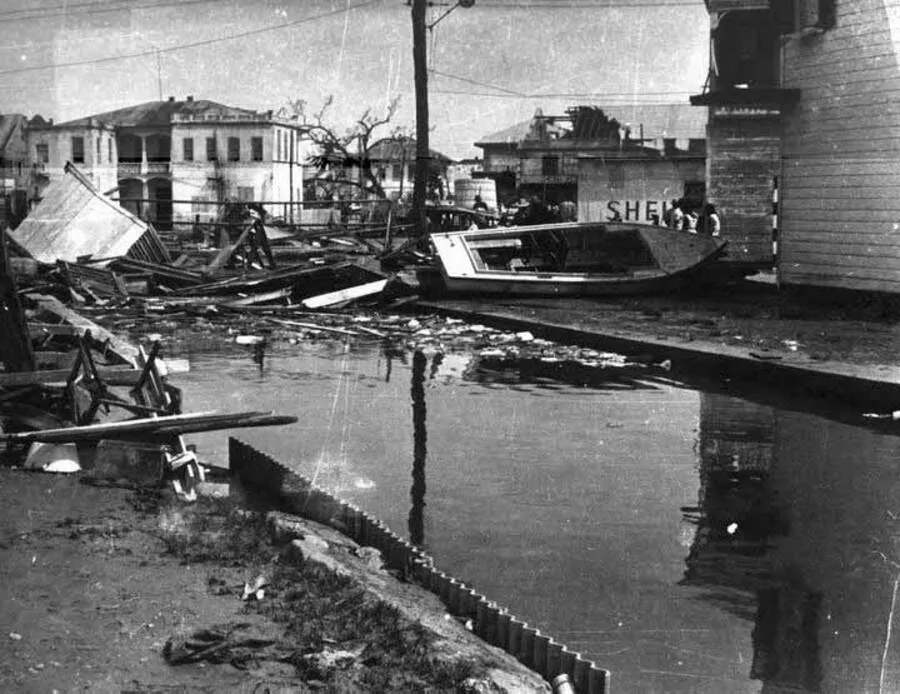 @ ambergriscaye.com
@ ambergriscaye.com
Many described being trapped on rooftops as the waters rose, while others told of families swept out to sea. Hattie killed 319 people and caused $60 million in damages. The devastation led to the relocation of the capital inland, to what is now Belmopan.
Hurricane Flora (1963)
Hurricane Flora devastated the Caribbean and parts of the Southeastern United States, causing some of the worst damage ever seen in Haiti and Cuba. In Haiti, landslides buried entire villages, killing over 8,000 people.
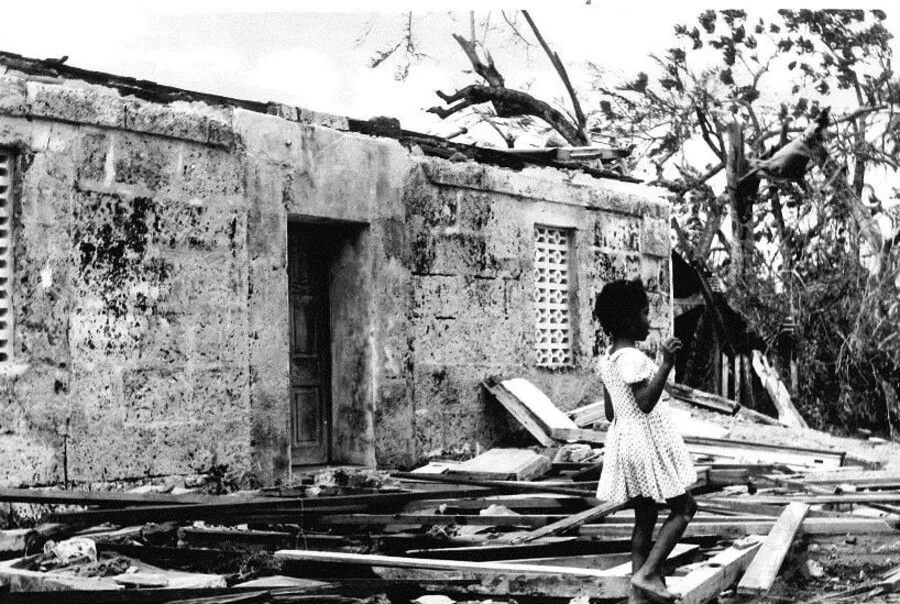 @trinidadexpress.com
@trinidadexpress.com
In Cuba, Flora dumped record rainfall that caused floods so widespread that many regions were submerged for days. The death toll across the Caribbean exceeded 7,000, and damage totaled $125 million.
Hurricane Betsy (1965)
Hurricane Betsy was the first hurricane in recorded history to cause over $1 billion in damages. After making landfall in Florida, it moved toward Louisiana, where its impact was particularly devastating in New Orleans. One of the most shocking consequences of Betsy was the failure of the levees that were supposed to protect the city.
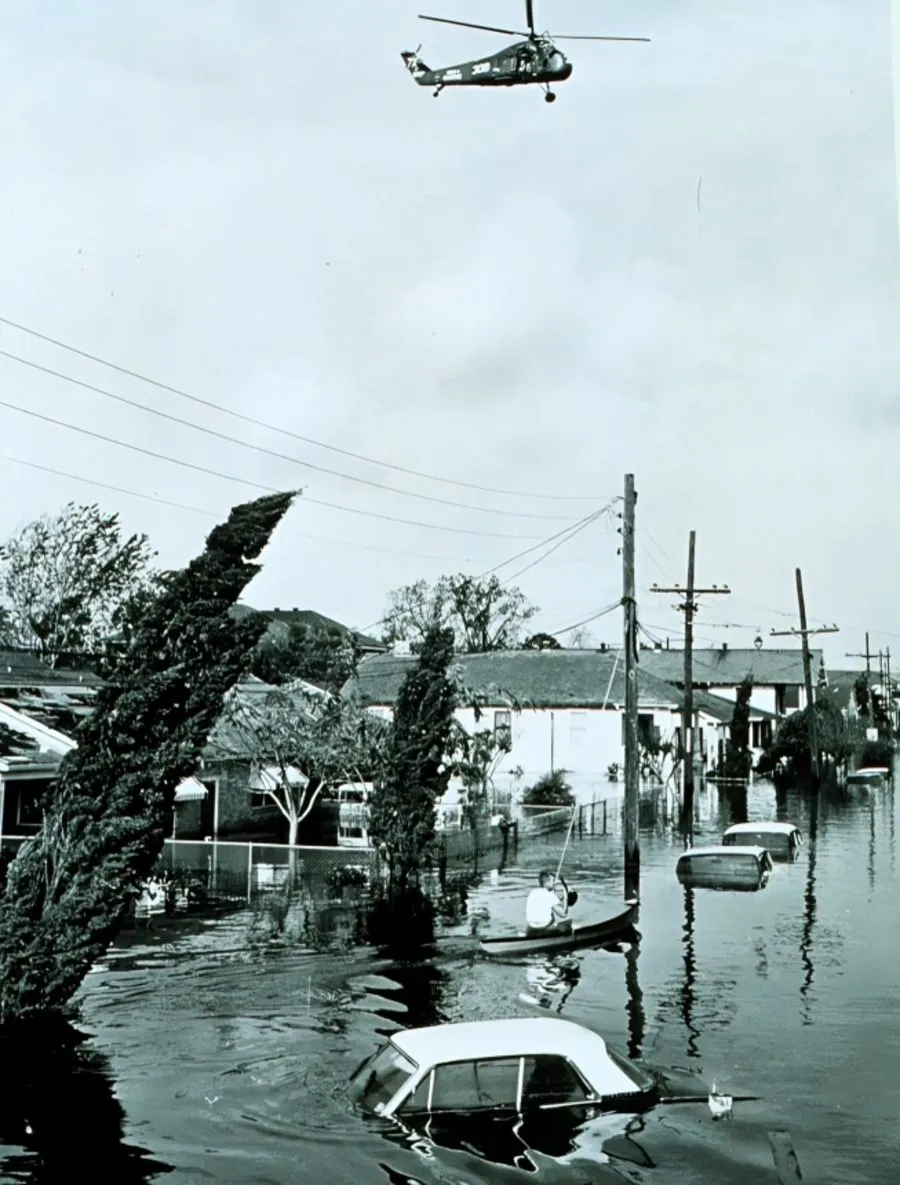 @aoml.noaa.gov
@aoml.noaa.gov
The storm surge overwhelmed these barriers, leading to catastrophic flooding that submerged 80% of New Orleans. The aftermath resulted in extensive destruction, requiring a long and arduous recovery process. The storm claimed 76 lives, a grim reminder of the risks posed by such powerful storms.
Hurricane Camille (1969)
Hurricane Camille, which struck the Gulf Coast in August 1969, remains one of the most powerful hurricanes to ever hit the United States. The storm's intensity was so extreme that it created a record storm surge of 24.6 feet, devastating coastal towns. As you can see from the photo, there was a shortage of drinking water after the hurricane...
 @ AP Photo/Jack Thornell
@ AP Photo/Jack Thornell
What’s particularly shocking about Camille is the loss of life it caused—over 250 people were killed, and thousands were injured. The aftermath revealed the limitations of forecasting and preparedness at the time, as many residents were caught off guard by the storm's sheer ferocity.
Hurricane Fifi-Orlene (1974)
A dual storm disaster, Hurricane Fifi-Orlene is remembered as one of the deadliest hurricanes in history. Striking Honduras, Fifi's rains caused massive floods and landslides, wiping out entire villages. Survivors described hearing screams as houses were buried under mud and people were swept away.
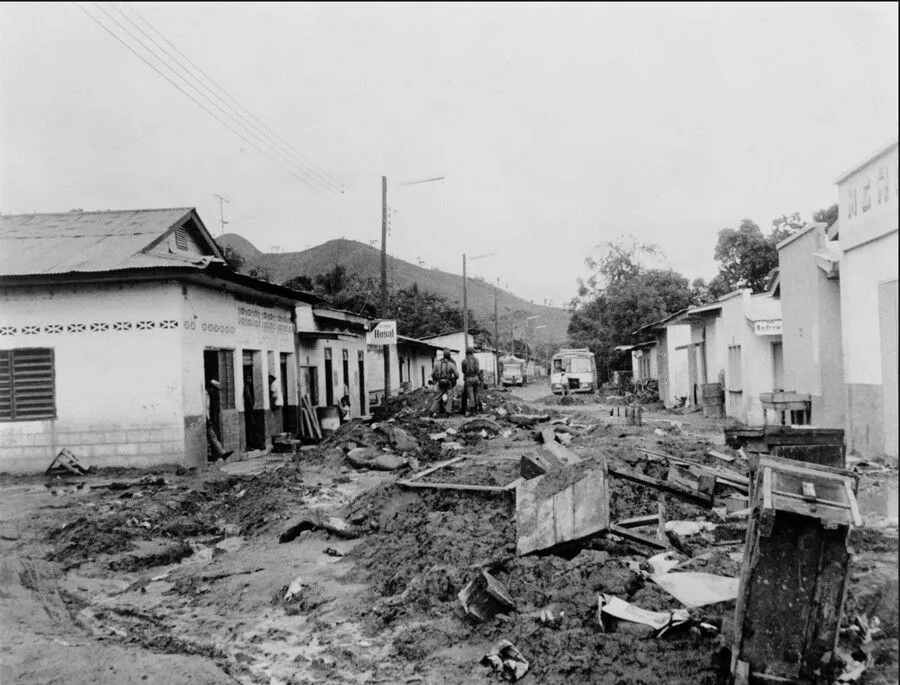 @vortix/x.com
@vortix/x.com
Over 8,000 people perished in Honduras alone. As Fifi weakened, it merged with Tropical Storm Orlene, which caused additional damage as it moved into Mexico. The combined storms caused an estimated $3.7 billion in damage.
Typhoon Tip (1979)
Typhoon Tip holds the record as the largest tropical cyclone ever measured, with a diameter of over 1,380 miles.
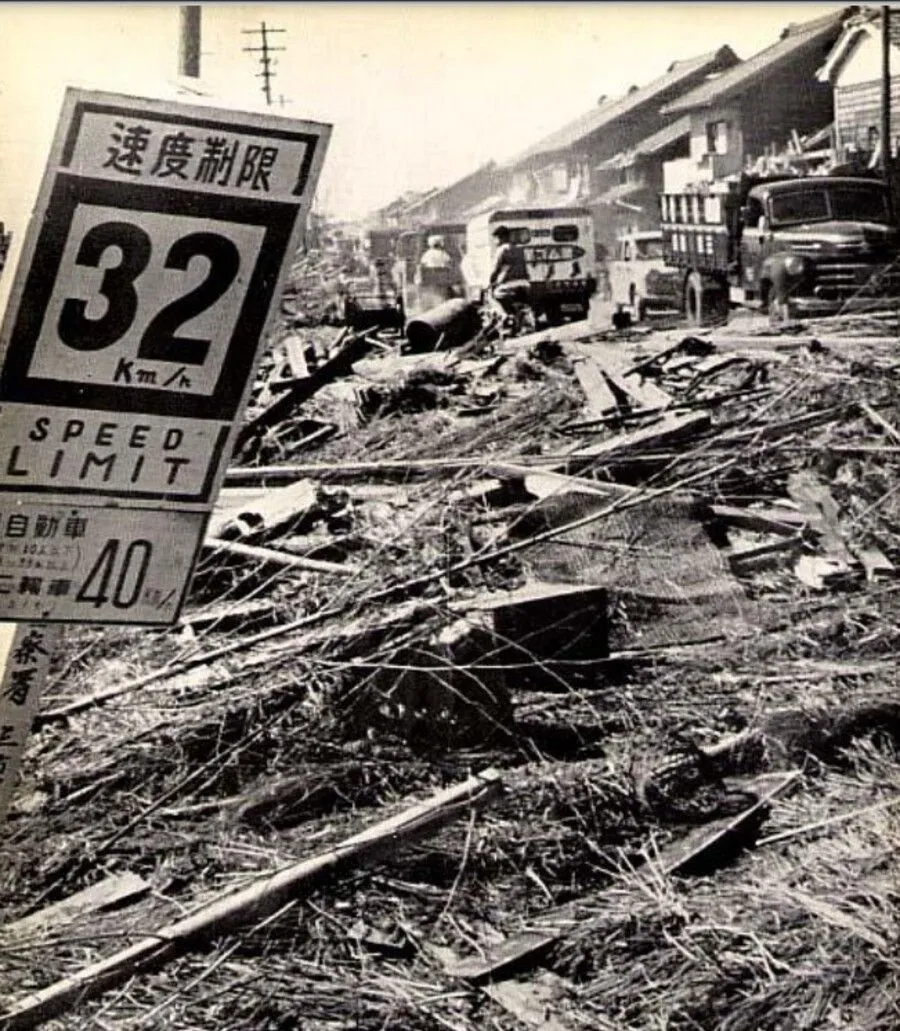 @ forms2.rms.com
@ forms2.rms.com
Though it didn’t cause as many fatalities as other storms, Tip’s sheer size made it a monster, bringing torrential rain and strong winds across much of Japan. The storm was responsible for over 100 deaths and left thousands homeless.
Hurricane Gilbert (1988)
Hurricane Gilbert was a force of nature that tore through the Caribbean, Mexico, and parts of the Gulf of Mexico in September 1988, leaving a trail of devastation in its wake. Eyewitnesses in Jamaica described the relentless roar of the storm, likening the wind to a freight train as homes were ripped apart, roofs vanished, and buildings crumbled like they were made of paper. People scrambled for shelter in fear as the storm swallowed everything in its path.
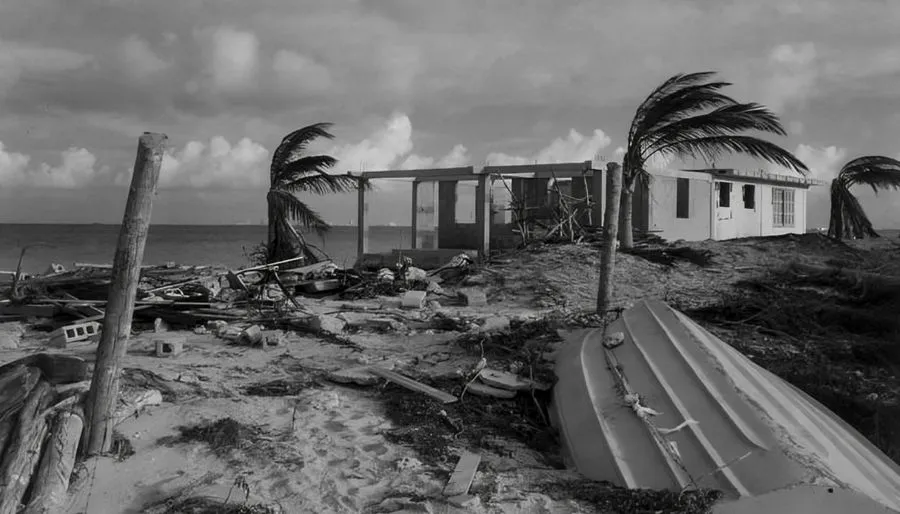 @Houston Chronicle
@Houston Chronicle
The storm caused catastrophic flooding, uprooted trees, and destroyed critical infrastructure. Gilbert left over 300 people dead and racked up a staggering $7.1 billion in damages.
Hurricane Hugo (1989)
Hurricane Hugo was a catastrophic storm that pummeled the Leeward Islands, Puerto Rico, and the Carolinas. Striking South Carolina as a Category 4 storm, Hugo unleashed 140 mph winds that snapped trees like matchsticks and tore roofs off homes.
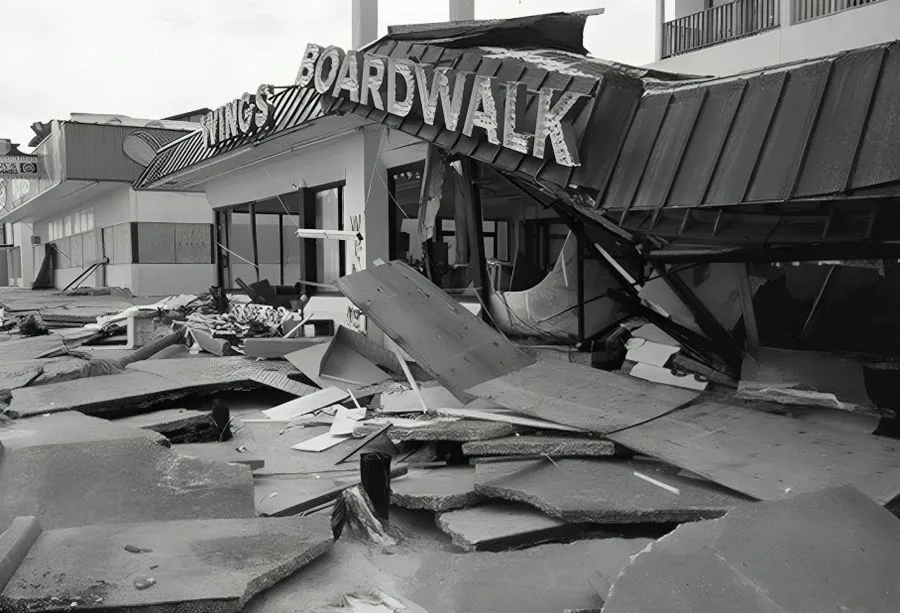 @wmbfnews.com
@wmbfnews.com
In Puerto Rico, Hugo's storm surge was described as a wall of water that swept entire villages into the ocean. The death toll reached 89, and survivors in the Carolinas recounted weeks without power, food, or clean water as they struggled to rebuild their lives. Hugo caused $10 billion in damage.
Hurricane Iniki (1992)
In September 1992, Hurricane Iniki slammed into Hawaii, becoming the strongest hurricane ever to hit the islands. Striking with winds of 145 mph, the eye of the storm passed directly over Kaua'i, leaving utter devastation in its wake. Many described seeing rooftops torn off like pieces of paper and watching in terror as their homes crumbled around them.
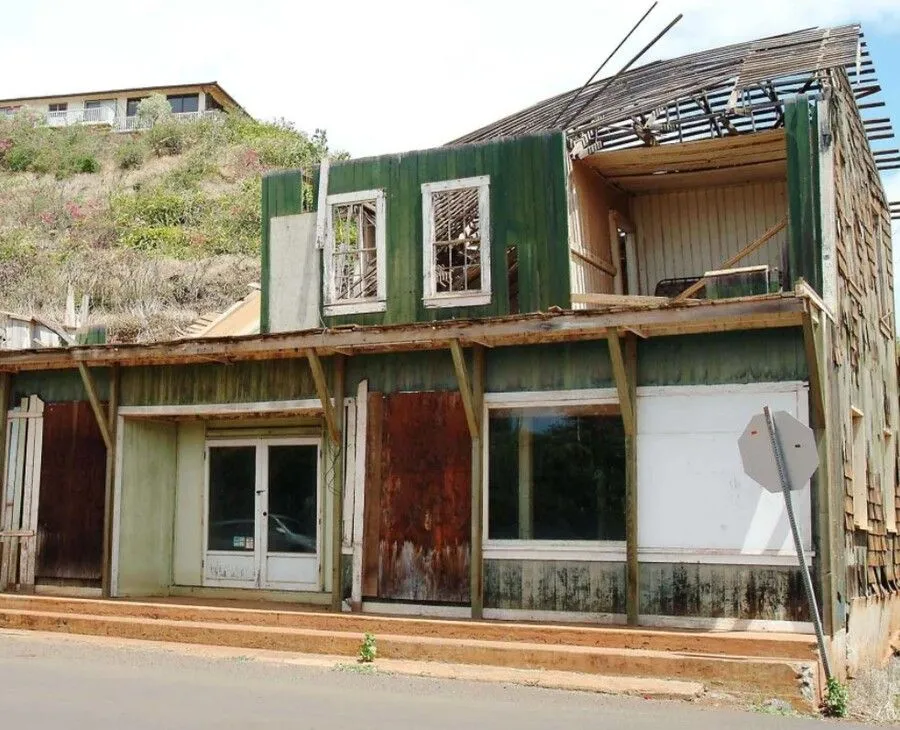 @DENNIS FUJIMOTO/AP
@DENNIS FUJIMOTO/AP
The aftermath was equally harrowing. Isolated on an island, people found themselves without basic necessities like food, water, or electricity for days.
Hurricane Andrew (1992)
When Hurricane Andrew hit Florida in August 1992, it left an indelible mark on the state's history and on hurricane preparedness policies across the nation. What set Andrew apart was not just its power but the sheer scale of destruction it caused. Over 63,000 homes were destroyed, displacing thousands and leaving entire neighborhoods unrecognizable. The 1992 film Untitled shows Marjorie Conklin cooling down in a hose-filled tub of water while surrounded by the remnants of her home in south Miami-Dade County, days after Hurricane Andrew devastated it.
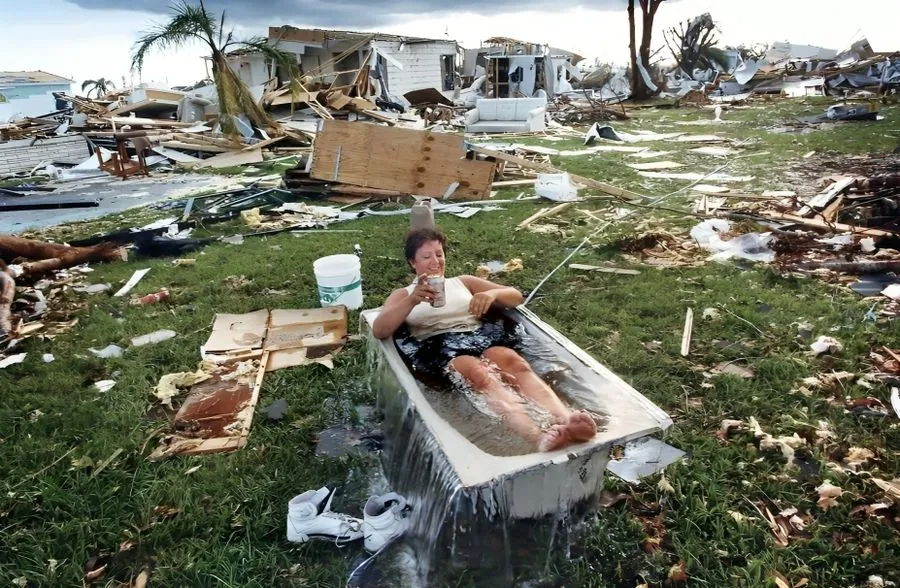 @C.W. Griffin Miami Herald file
@C.W. Griffin Miami Herald file
The financial impact was staggering, with damages estimated at $27 billion! But the aftermath of Andrew brought about significant changes in building codes and emergency management strategies in Florida and beyond.
Hurricane Mitch (1998)
Hurricane Mitch, which struck Central America in October 1998, is often remembered for its catastrophic rainfall and the subsequent flooding and landslides that devastated the region. Making landfall in Honduras, Mitch lingered over the area, dumping more than 75 inches of rain in some areas. You can see how, after Hurricane Mitch forced the Choluteca River to overflow and flood Tegucigalpa, a man examines the remains of a structure.
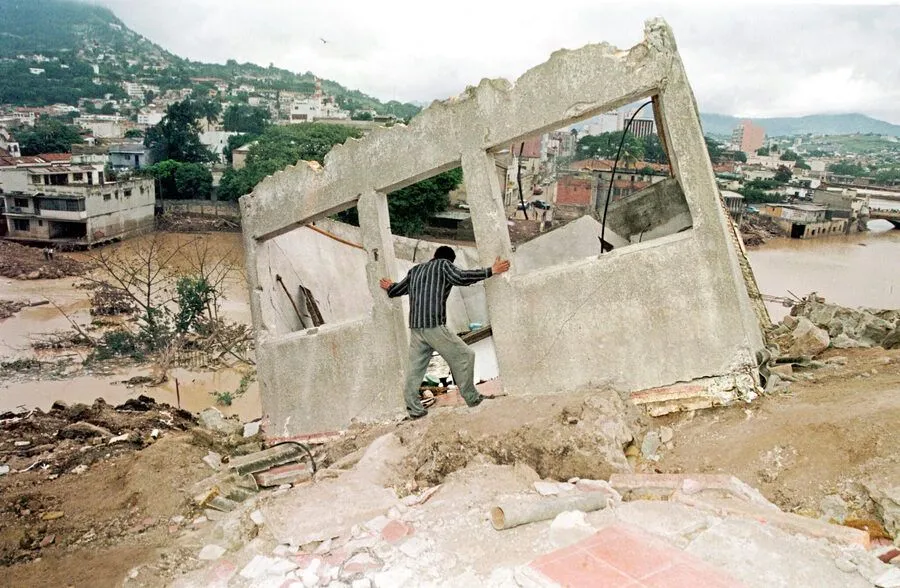 @YURI CORTEZ/AFP
@YURI CORTEZ/AFP
The destruction was staggering: entire villages were swept away, and the storm claimed over 11,000 lives across Honduras, Nicaragua, and Guatemala. Mitch's impact extended beyond immediate destruction; it severely affected the economies of the affected countries, leading to years of recovery efforts.
Hurricane Lenny (1999)
Nicknamed “Wrong Way Lenny,” this hurricane took an unusual west-to-east path across the Caribbean, intensifying unexpectedly as it approached the Lesser Antilles. Lenny hit the islands with 155 mph winds, destroying homes and businesses.
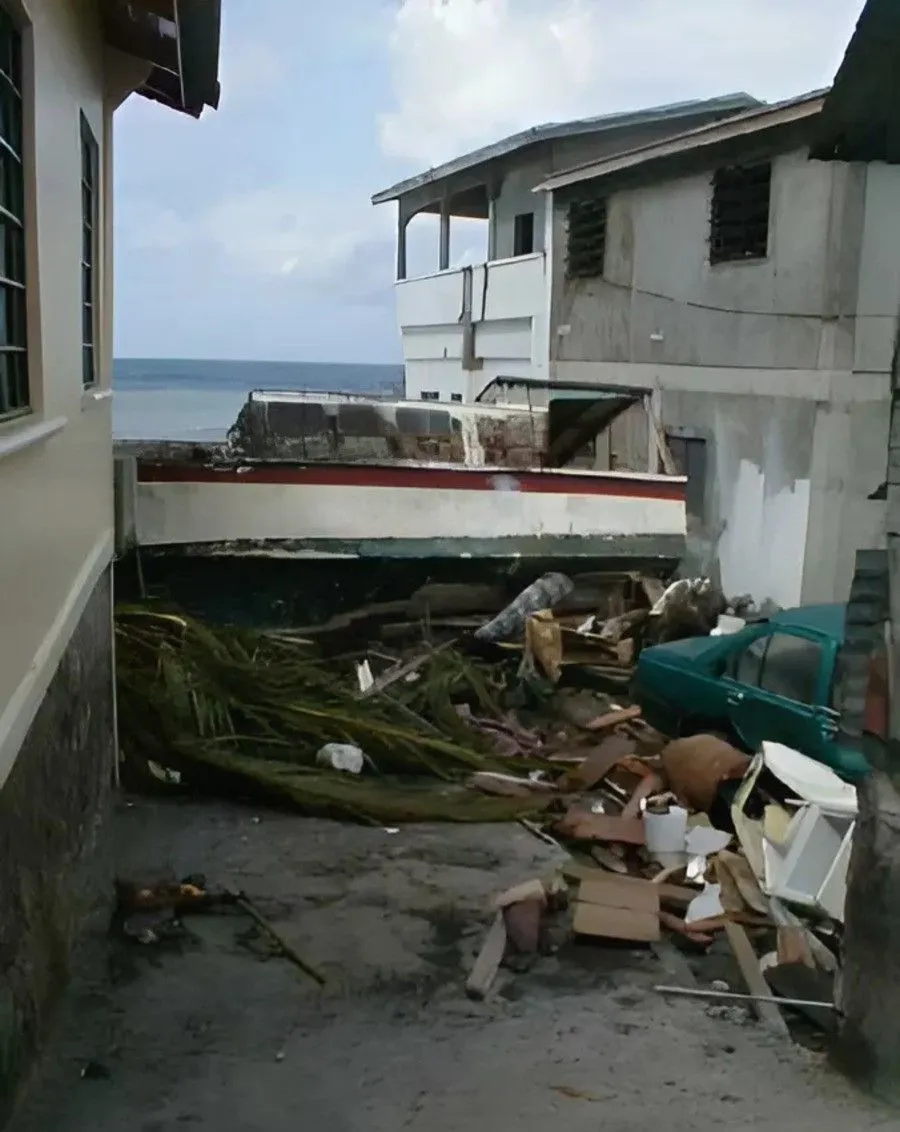 @avirtualdominica.com
@avirtualdominica.com
St. Croix, in particular, was heavily affected, with storm surges cutting off access to entire areas. Survivors told of their terror as they tried to escape rising waters, only to find roads blocked or washed out. Though Lenny claimed 17 lives, its path and behavior were unprecedented, causing $750 million in damages.
Hurricane Floyd (1999)
Hurricane Floyd struck in September 1999 and showcased the destructive power of flooding, particularly in North Carolina. Rivers swelled beyond their banks, leading to overflowing tributaries and the inundation of towns, rendering them uninhabitable.
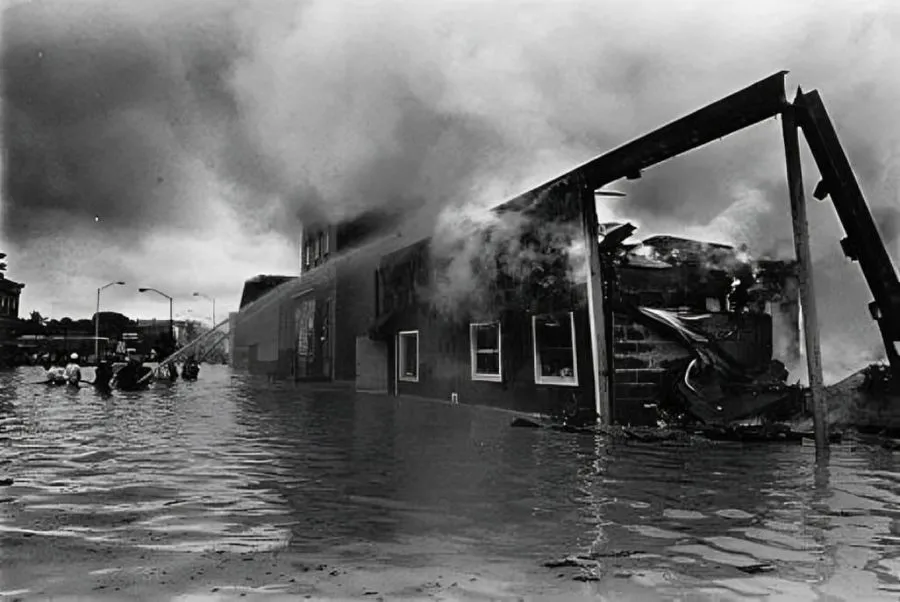 @Bound Brook NJ Events/facebook.com
@Bound Brook NJ Events/facebook.com
Floyd's impacts were felt far and wide, with tens of thousands of people evacuated as the storm approached. The flooding resulted in damage estimates exceeding $6 billion and left at least 57 people dead.
Hurricane Jeanne (2004)
Hurricane Jeanne wreaked havoc in Haiti, where torrential rains caused catastrophic flooding and mudslides. Jeanne didn’t even make landfall in the country but the rain it dumped on Haiti left over 3,000 people dead, many of whom drowned or were crushed by debris.
 @livewxradar.com
@livewxradar.com
Survivors described the harrowing ordeal of watching their homes and entire neighborhoods washed away. Jeanne went on to cause $7.5 billion in damages across the Bahamas and the United States.
Hurricane Ivan (2004)
Hurricane Ivan was a monstrous Category 5 storm that caused widespread destruction in the Caribbean and the U.S. Gulf Coast. Ivan’s winds reached 165 mph, and its massive storm surge flooded coastal areas in Alabama, Mississippi, and Florida.
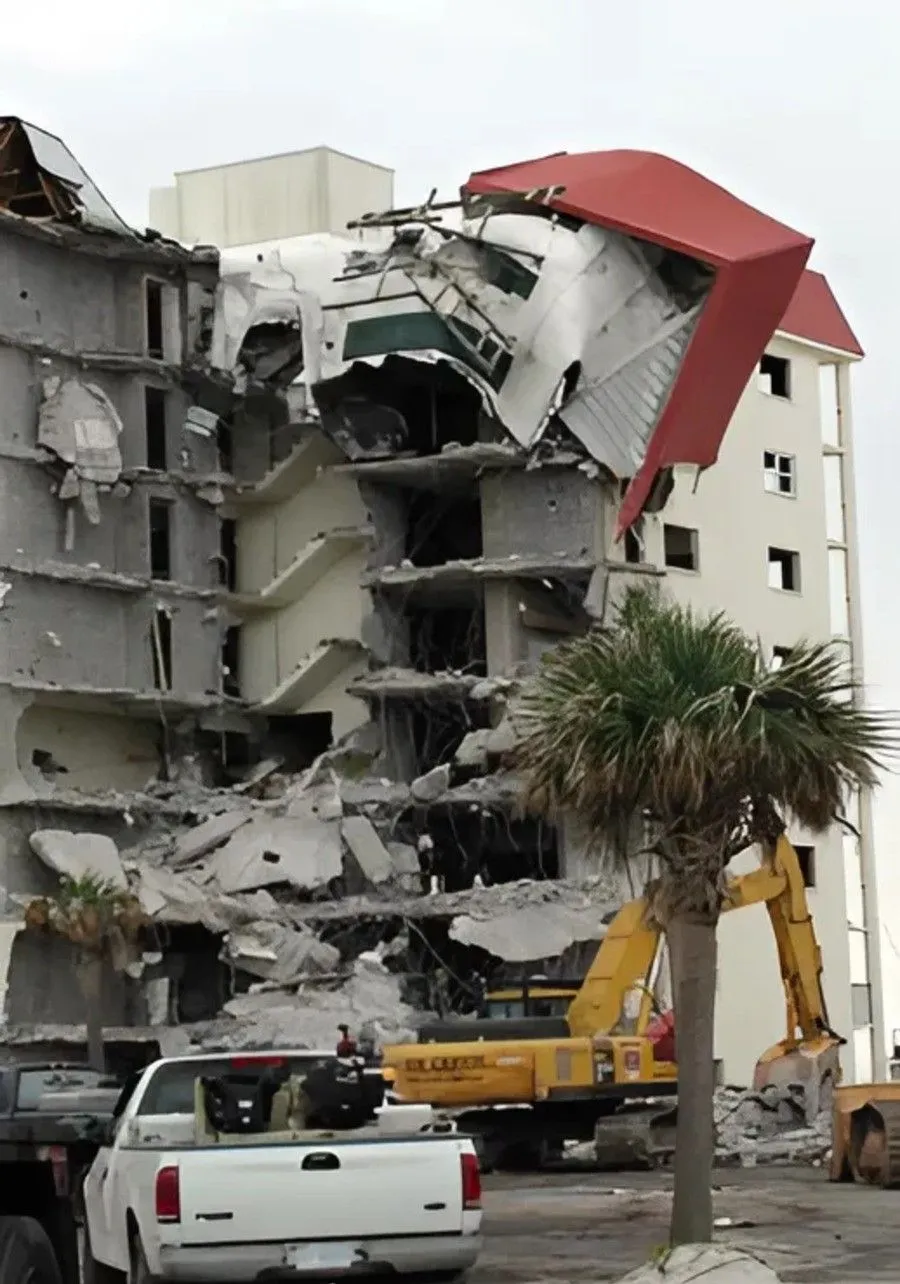 @teamcomplete.com
@teamcomplete.com
Over 120 deaths were recorded, and survivors in Grenada described hiding in bathtubs as buildings collapsed around them. In the U.S., Ivan caused over $27 billion in damages and left millions without power for weeks.
Hurricane Rita (2005)
Just a few weeks after Hurricane Katrina, Hurricane Rita made its presence felt in September 2005, exacerbating the already dire situation in the Gulf Coast region. Making landfall as a Category 3 storm in Texas, Rita caused widespread devastation, particularly in areas still reeling from Katrina's impact. The storm resulted in the evacuation of over 3 million residents in Texas and Louisiana, leading to one of the largest evacuations in U.S. history.
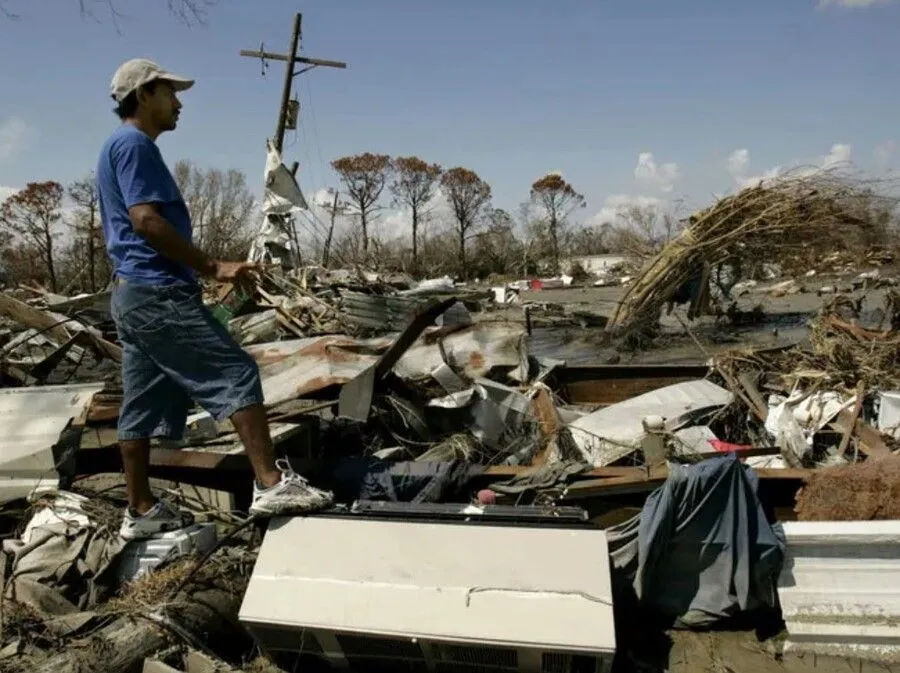 @lubbockonline.com
@lubbockonline.com
Rita's winds reached up to 120 mph, causing significant damage to infrastructure and homes. The economic toll was severe, with estimates of damages reaching $18 billion.
Hurricane Katrina (2005)
When Hurricane Katrina made landfall in August 2005, it unleashed chaos on New Orleans, leaving a path of devastation that is hard to comprehend. Over 1,800 lives were lost, and thousands found themselves trapped in their homes, desperately seeking refuge on rooftops as floodwaters surged around them.
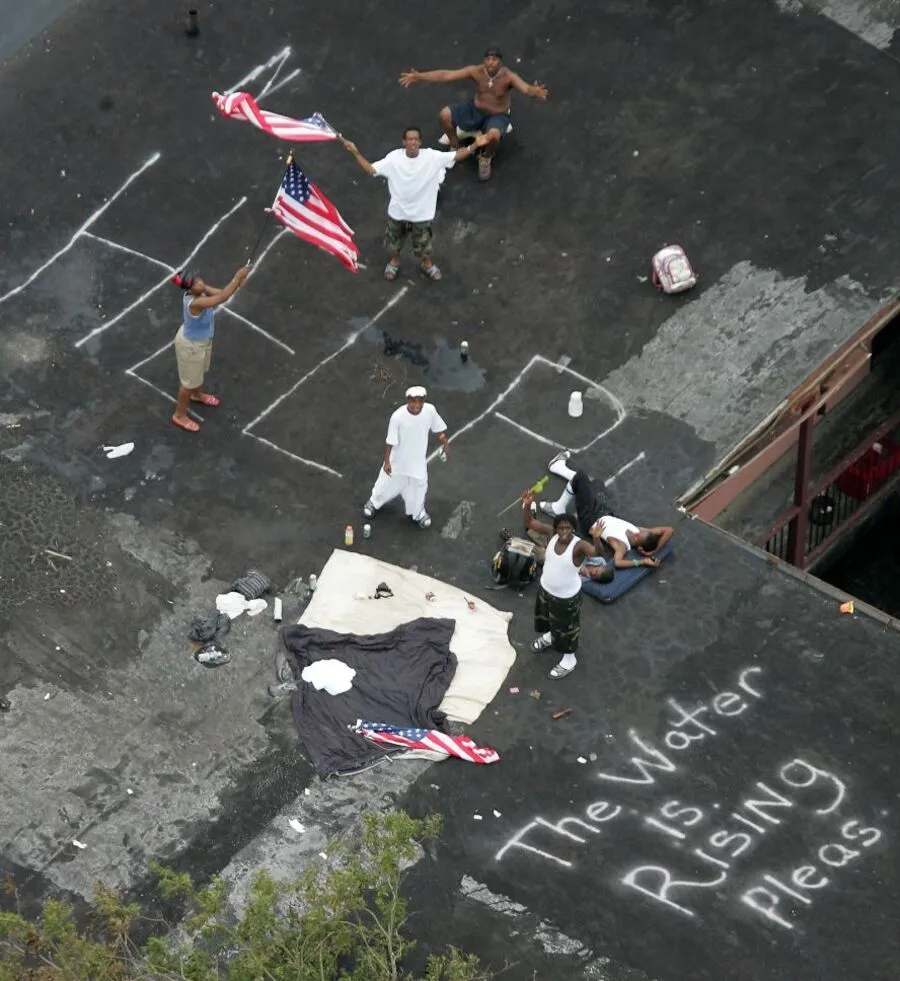 @David J. Phillip/Pool/AP
@David J. Phillip/Pool/AP
As the levees failed, they turned the city into a veritable water world, displacing more than a million residents and transforming bustling neighborhoods into ghost towns. The economic toll was staggering, with damages estimated at a jaw-dropping $125 billion, making Katrina the costliest hurricane in U.S. history.
Hurricane Ioke (2006)
Hurricane Ioke, a Category 5 storm, is one of the most intense Pacific hurricanes on record. While it didn’t hit major populated areas, it caused severe destruction to Wake Island, a tiny U.S. atoll.
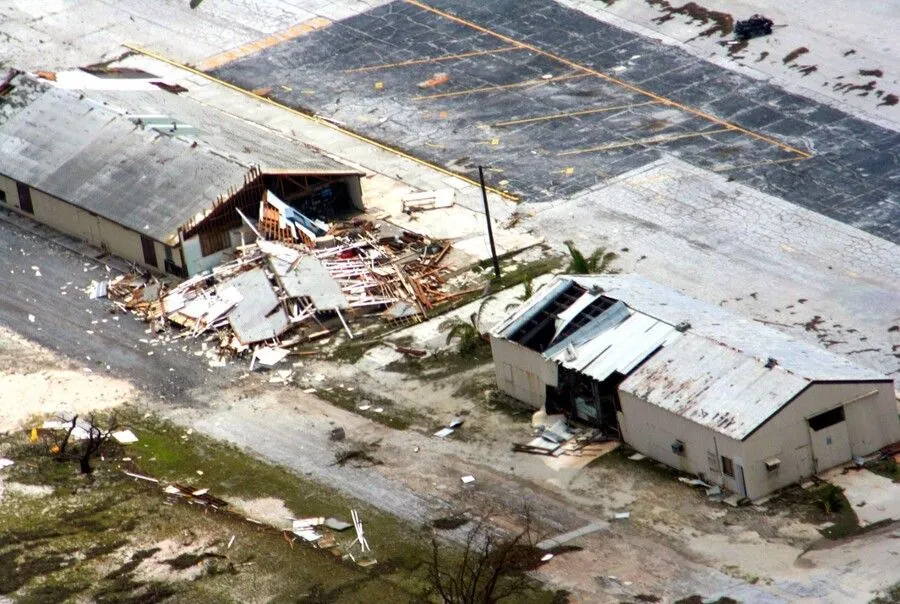 @timesnow/Instagram.com
@timesnow/Instagram.com
With peak winds reaching 160 mph, Ioke forced the evacuation of military personnel from the island, which was left submerged under water after the storm surge.
Hurricane Felix (2007)
Hurricane Felix made landfall in Nicaragua as a Category 5 storm, the second such storm of the 2007 Atlantic season. The indigenous Miskito communities in Nicaragua were hit especially hard, with entire villages flattened and survivors left without food, water, or shelter.
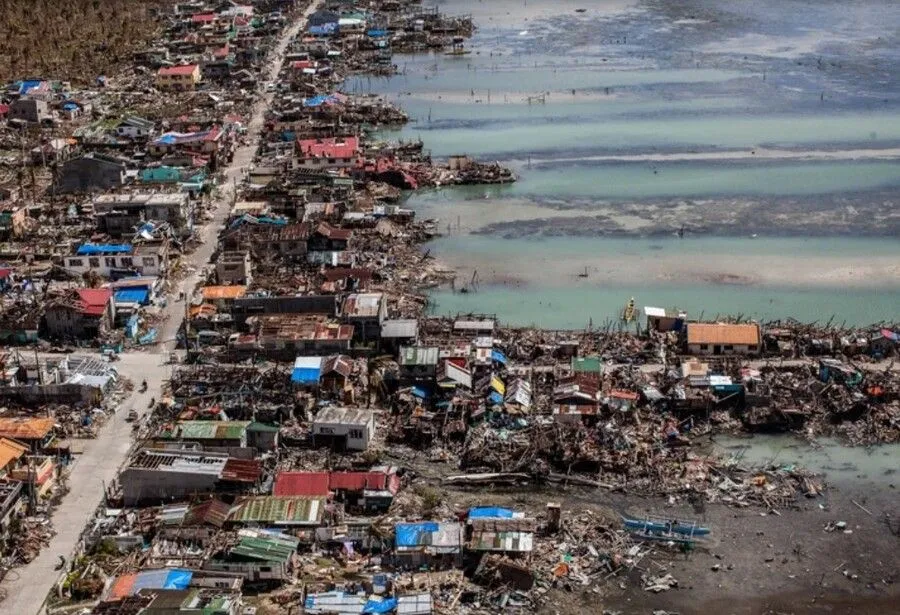 @hypotheticalhurricanes.fandom.com
@hypotheticalhurricanes.fandom.com
Rescue efforts were hampered by the isolated nature of these communities, leaving many stranded for days. Felix killed over 130 people, though some estimates suggest the death toll could be much higher due to missing individuals. Damages reached $720 million.
Cyclone Nargis (2008)
Cyclone Nargis tore through Myanmar (Burma) in May 2008, causing widespread destruction. It claimed the lives of more than 138,000 people, many of whom were trapped by the flooding and tidal surges.
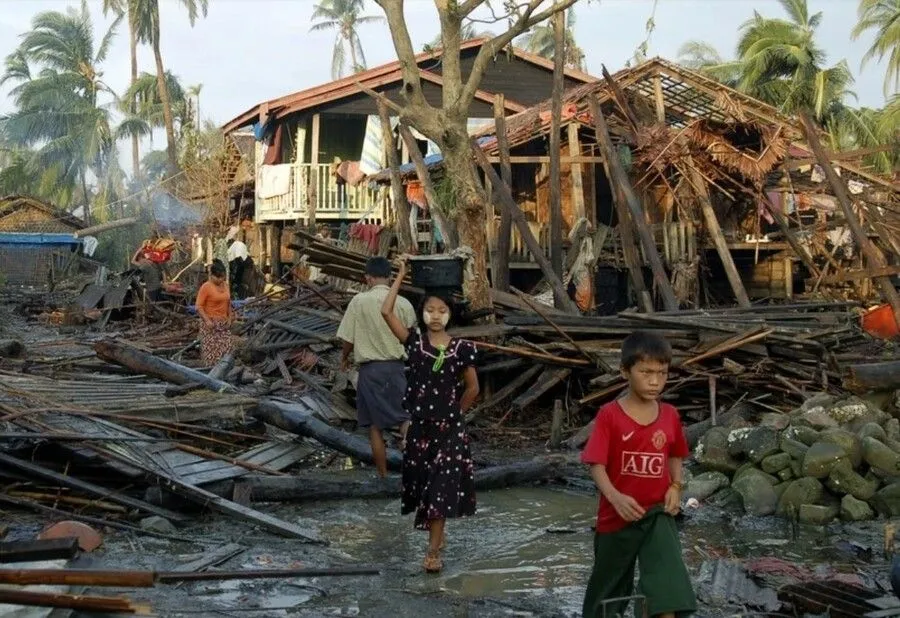 @nbcnews.com
@nbcnews.com
The cyclone also left 2.4 million people in need of food, shelter, and medical aid. Myanmar’s government faced criticism for its slow response to international offers of aid, exacerbating the humanitarian crisis.
Hurrigane in Namie (2011)
Before 2011, Namie was a peaceful, scenic town in Japan’s Fukushima Prefecture, known for its picturesque landscapes, lush forests, and mountainous views. However, natural disasters — a powerful earthquake followed by a massive storm — triggered a catastrophic event at the Fukushima Daiichi Nuclear Power Plant. The fallout from the nuclear meltdown forced the full evacuation of Namie’s 21,000 residents, leaving the town deserted overnight.
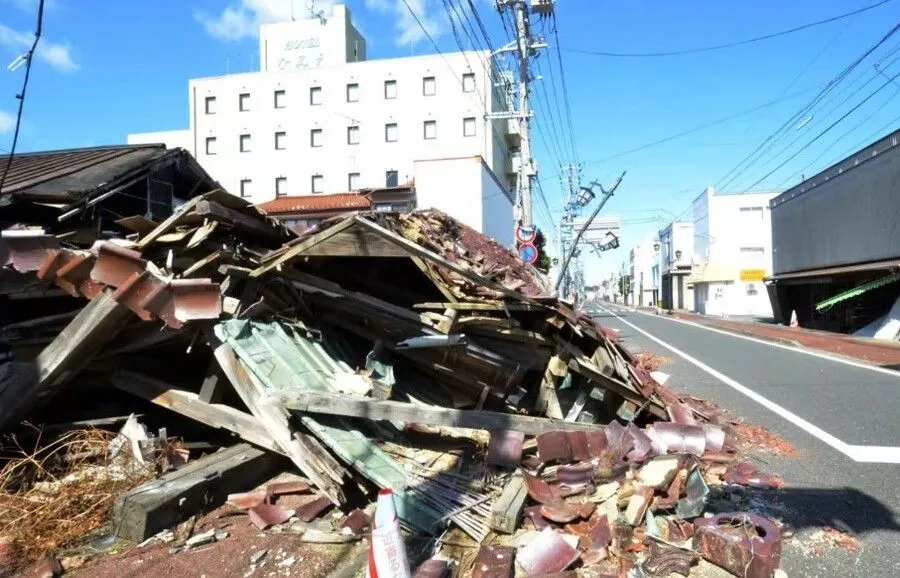 @Jonathan Soble/AFP
@Jonathan Soble/AFP
Now, Namie is a ghost town, with streets frozen in time. Buildings, schools, and homes remain abandoned, covered in dust and overgrowth. Despite its eerie atmosphere, Namie has become a place of interest for tourists and journalists.
Hurricane Sandy (2012)
Hurricane Sandy, often dubbed "Superstorm Sandy," carved a path of destruction through the Caribbean and along the East Coast in late October 2012. While it might not have been the fiercest hurricane in terms of wind speed, its sheer size and the monstrous storm surge it generated left a shocking legacy. A staggering 24 states felt Sandy's wrath, with damages soaring to an estimated $70 billion.
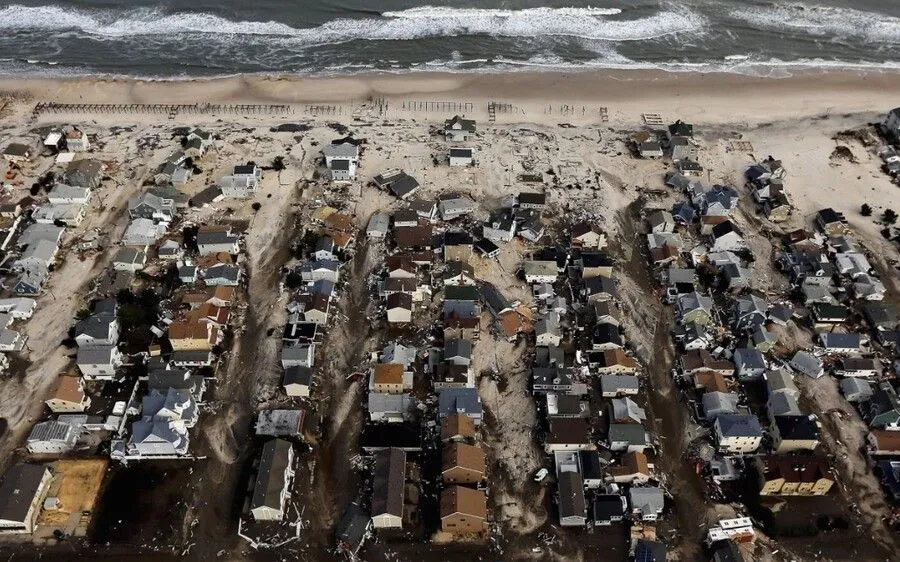 @Mario Tama, Getty Images
@Mario Tama, Getty Images
New York and New Jersey bore the brunt, as the storm turned subways into rivers and plunged millions into darkness. The devastation was so profound that it claimed 233 lives across the U.S., with countless others left without power for days, even weeks. Sandy served as a grim wake-up call, highlighting the precariousness of coastal cities in the face of climate change and prompting urgent discussions on resilience and infrastructure in the years to follow.
Typhoon Haiyan (2013)
One of the strongest tropical cyclones ever recorded, Typhoon Haiyan (Yolanda) hit the Philippines with sustained winds of 195 mph. It obliterated entire towns and cities, displacing over 4 million people and claiming more than 6,000 lives.
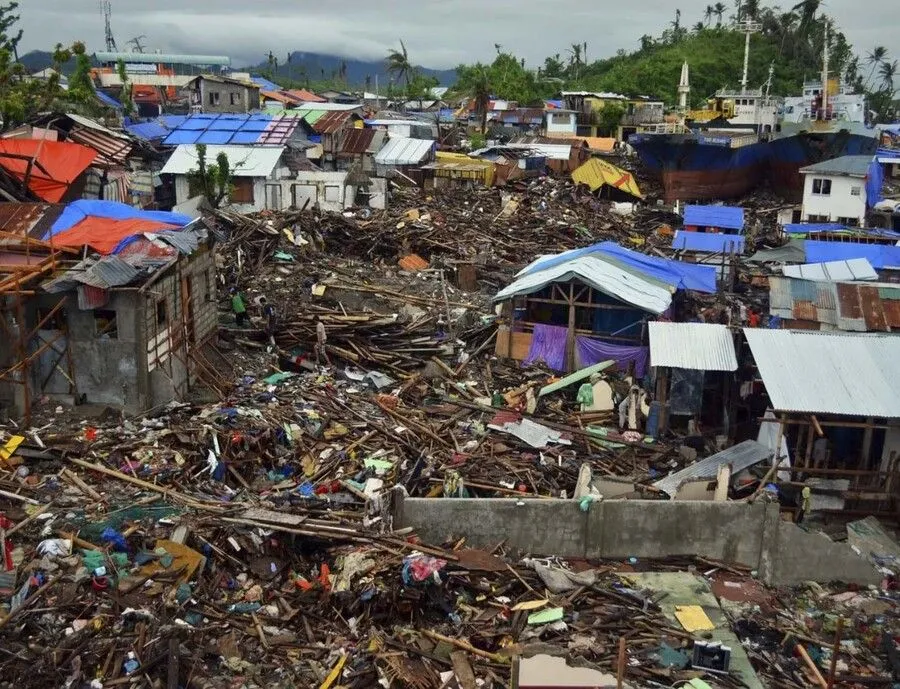 @Tigeryan—iStock
@Tigeryan—iStock
Tacloban City was hit particularly hard, with aerial footage showing vast stretches of rubble where homes and businesses once stood. Despite international aid efforts, the recovery was slow.
Cyclone Winston (2016)
Cyclone Winston, the strongest tropical cyclone ever recorded in the Southern Hemisphere, left a deep scar on Fiji. With wind speeds of 180 mph, it flattened entire villages, leaving tens of thousands homeless.
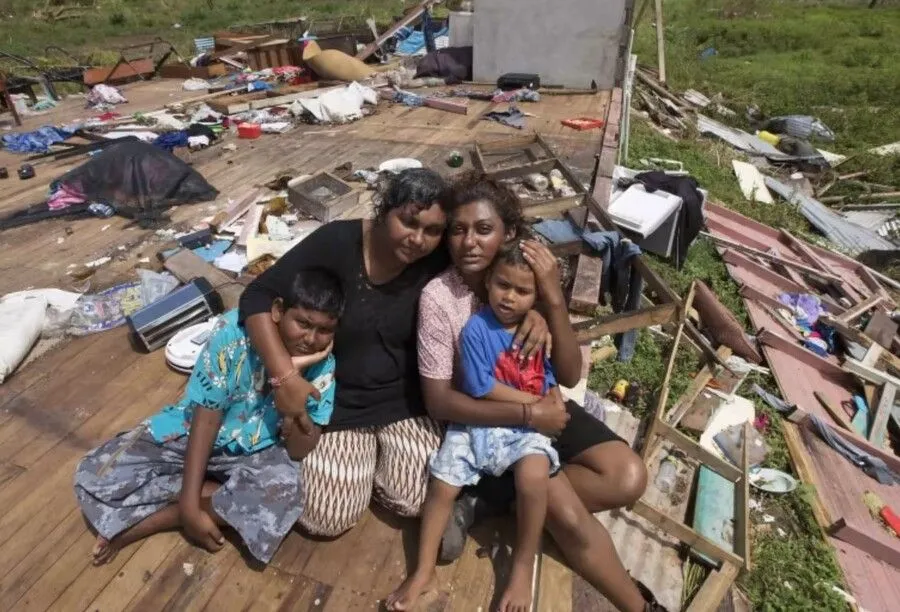 @AP/todayonline.com
@AP/todayonline.com
The storm claimed 44 lives and caused over $1 billion in damages. In its aftermath, international aid poured in to help rebuild communities. But unfortunately nothing can be done about the nightmare that people have experienced.
Hurricane Patricia (2015)
When Hurricane Patricia hit the coast of Mexico in October 2015, it made history as the strongest hurricane ever recorded in the Western Hemisphere. With sustained winds peaking at 215 mph, it was a monster of a storm, flattening everything in its path.
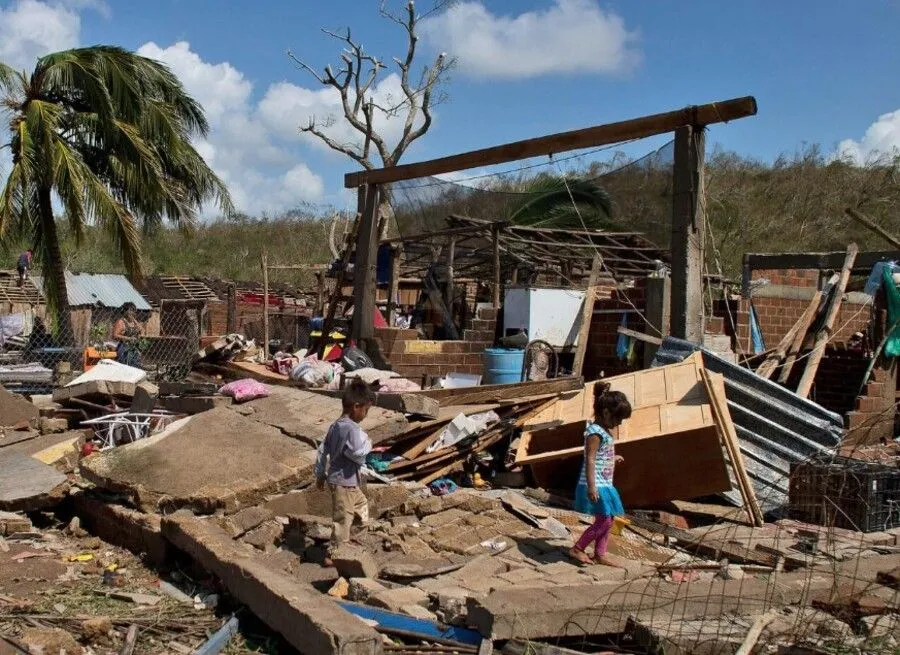 @AP
@AP
Though extensive evacuations limited the number of fatalities, the destruction was widespread. Those who stayed behind to weather the storm reported an eerie stillness before Patricia struck, followed by the terrifying sounds! Trees were uprooted, metal roofs ripped apart like aluminum foil, and entire communities were left in tatters.
Hurricane Harvey (2017)
In August 2017, Hurricane Harvey made its ominous entrance into Texas, ultimately cementing its place in history as one of the most devastating hurricanes the U.S. has ever faced. The storm unleashed a deluge of rain, with some areas receiving over 50 inches—an unfathomable amount that led to catastrophic flooding, particularly in Houston, the nation's fourth-largest city. Whole neighborhoods were submerged, and the scale of the disaster was jaw-dropping.
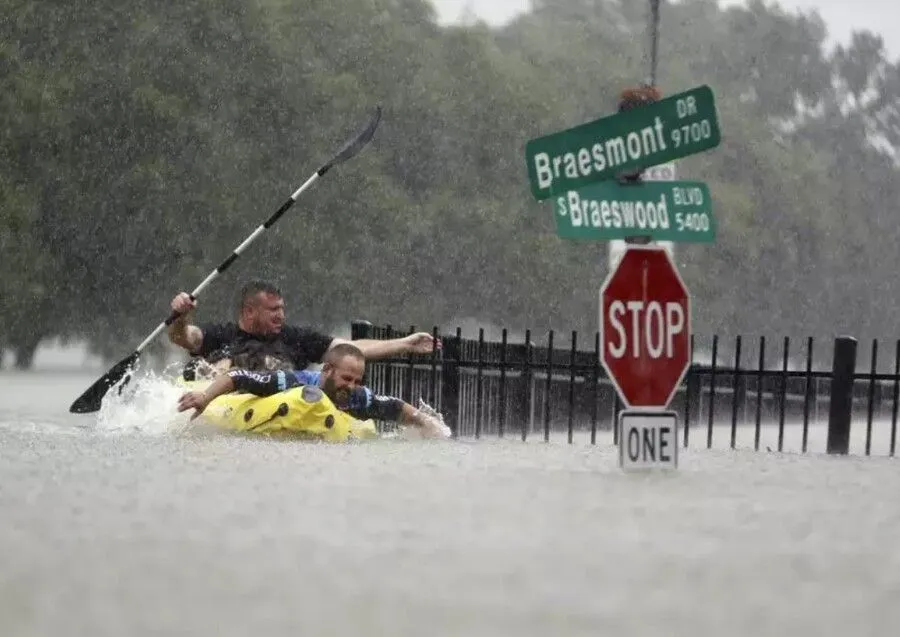 @Mark Mulligan/Houston Chronicle
@Mark Mulligan/Houston Chronicle
The human cost was staggering, with at least 107 lives lost but the story of Harvey is also one of resilience. Thousands of volunteers and emergency responders mobilized in a race against time, working tirelessly to save those stranded in their homes. The economic impact was equally staggering, with estimates of damages reaching up to $125 billion. Harvey not only showcased the destructive power of nature but also underscored the need for a robust response strategy for urban flooding in a changing climate.
Hurricane Irma (2017)
Hurricane Irma struck the Caribbean and the southeastern United States in September 2017, leaving a trail of destruction that stunned even seasoned meteorologists. This storm, with winds reaching a staggering 185 mph, was one of the most powerful hurricanes ever recorded in the Atlantic.
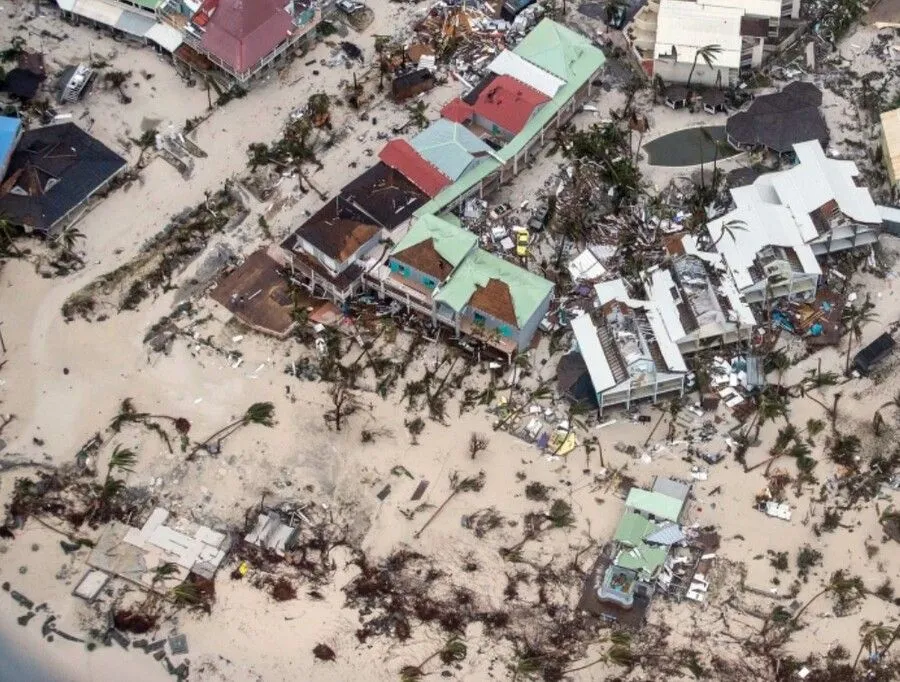 @Gerben Van Es/Dutch Defense Ministry via AP
@Gerben Van Es/Dutch Defense Ministry via AP
The storm forced the evacuation of over 6 million residents, making it one of the largest evacuations in U.S. history. The financial ramifications were colossal, with damage estimates climbing to $77 billion. Irma claimed at least 134 lives! Power outages affected nearly 7 million homes and businesses across the Southeast U.S. for days on end.
Hurricane Ophelia (2017)
Rarely do hurricanes make their way to Europe but in 2017, Hurricane Ophelia became a significant anomaly. Though Ophelia weakened from a tropical cyclone by the time it struck Ireland and the UK, it brought ferocious winds, torrential rain, and widespread power outages.
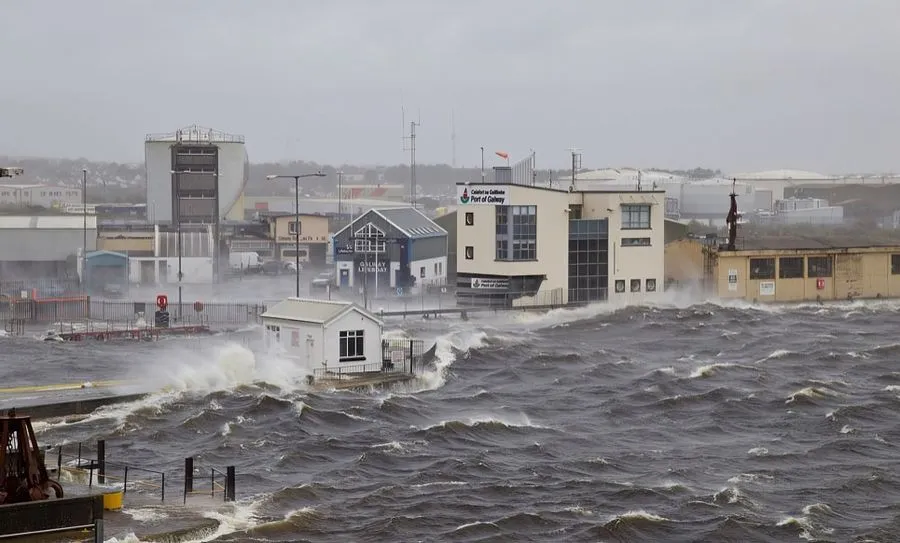 @James Corballis/theportofgalway.ie
@James Corballis/theportofgalway.ie
In Ireland, the storm killed three people and left hundreds of thousands of residents in the dark for several days. The storm's wind speeds, up to 119 mph, caused untold damage to homes, forests, and infrastructure. Emergency services were stretched thin, and many rural areas had to wait for days before help arrived.
Hurricane Maria (2017)
Just weeks after Hurricane Irma, Hurricane Maria made its catastrophic entrance into the Caribbean, striking Puerto Rico with devastating force. On September 20, 2017, Maria made landfall as a Category 4 hurricane, bringing with it winds of up to 155 mph and relentless rain. The results were nothing short of apocalyptic: the island's electrical grid was annihilated, leaving millions without power for months, some even for over a year. Leida Rodriguez and Javier Castellanos are shown in the picture standing in front of Villa Esperanza in Salinas, Puerto Rico, their home that fell into a sinkhole after being inundated with mud and water during Hurricane Fiona.
 @Pedro Portal/El Nuevo Herald via TNS
@Pedro Portal/El Nuevo Herald via TNS
The human toll was staggering, with estimates suggesting that nearly 3,000 lives were lost as a direct result of the storm and its aftermath. Puerto Rico's infrastructure was so severely damaged that the recovery process became a humanitarian crisis. The storm caused an estimated $90 billion in damages, and many residents were forced to leave the island, seeking refuge in the mainland U.S.
Hurricane Florence (2018)
In September 2018, Hurricane Florence made landfall in North Carolina, initially classified as a Category 1 hurricane. However, it was the astonishing 36 inches of rain that it unleashed in some areas that caused widespread devastation.
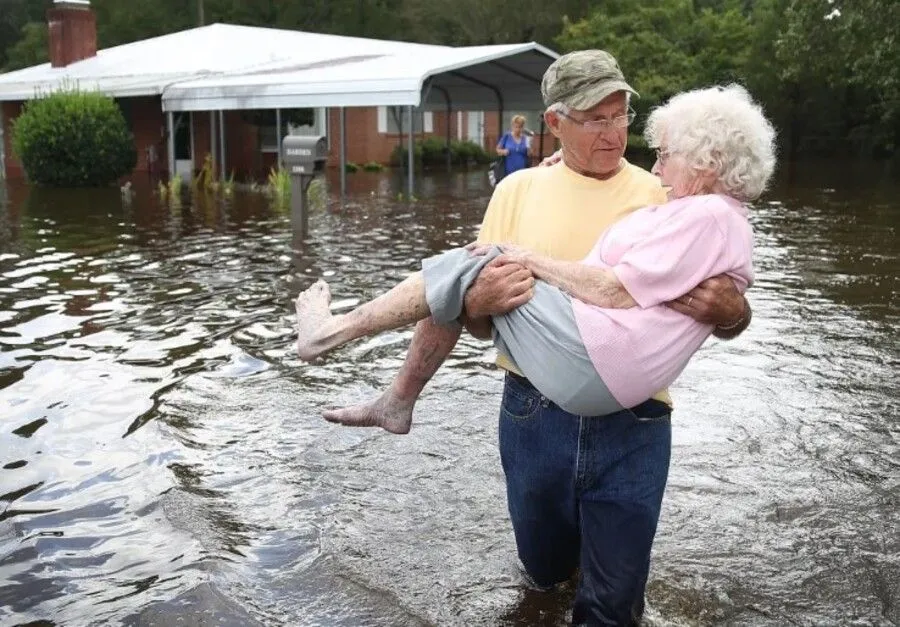 @Joe Raedle|Getty Images
@Joe Raedle|Getty Images
Florence’s slow movement led to catastrophic flooding, displacing over a million residents and resulting in over 50 fatalities. The storm inflicted an estimated $24 billion in damages, reminding us about climate change!
Typhoon Jebi (2018)
Typhoon Jebi hit Japan in 2018, becoming the strongest typhoon to make landfall there in 25 years. It wreaked havoc on Osaka and Kobe, severely impacting Kansai International Airport when storm surges flooded the runways and damaged infrastructure. When high tides flood the area, a fire breaks out at the used car storage site.
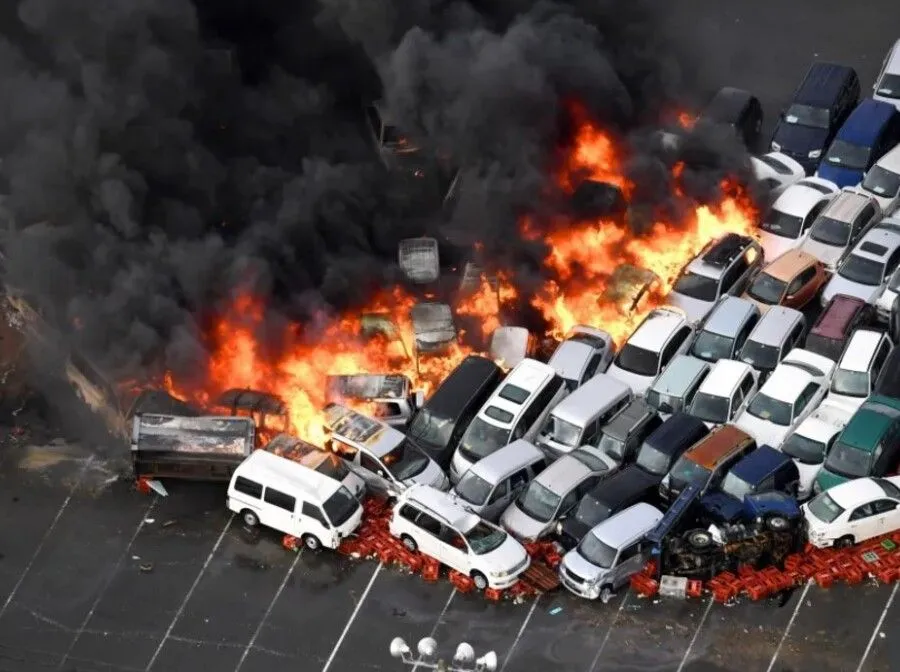 @thesun.co.uk
@thesun.co.uk
The typhoon left 11 people dead and hundreds injured, while disrupting transportation and flights for weeks. Despite modern defenses, Jebi’s power shocked the country, causing over $12 billion in damages, and some of the region's landmarks were still being restored years later.
Hurricane Dorian (2019)
In September 2019, Hurricane Dorian unleashed its fury on the Bahamas as one of the most powerful storms ever recorded, making landfall as a Category 5 hurricane with winds exceeding 185 mph.
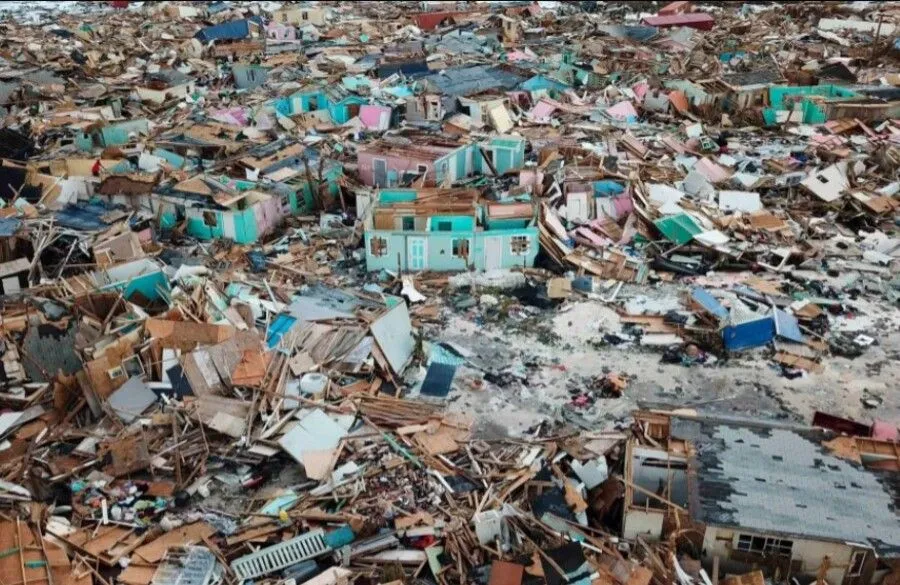 @Associated Press
@Associated Press
The storm hovered over the Bahamas for 48 hours, obliterating entire neighborhoods, especially in Abaco and Grand Bahama. With at least 70 lives lost and damages estimated at $7 billion, Dorian underscored the urgent need for humanitarian aid and highlighted the vulnerabilities of island nations.
Hurricane Laura (2020)
When Hurricane Laura roared into Louisiana in August 2020, it was a fierce reminder of nature’s wrath. Striking as a Category 4 hurricane, Laura’s winds clocked in at 150 mph, obliterating homes and businesses in Lake Charles and surrounding areas.
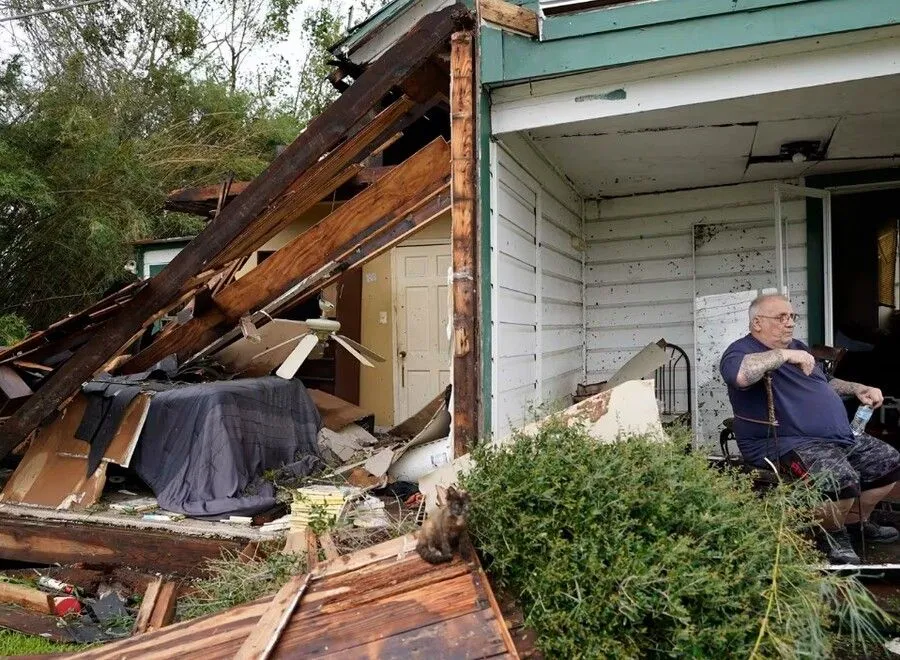 @Gerald Herbert/AP
@Gerald Herbert/AP
The storm surge inundated coastal towns, while the aftermath revealed scenes of utter destruction. The hurricane claimed 28 lives and inflicted damages estimated at $19 billion.
Cyclone Amphan (2020)
Cyclone Amphan hit India and Bangladesh in May 2020, during the peak of the COVID-19 pandemic. As a super cyclone, it caused widespread destruction with wind speeds of up to 165 mph. The storm displaced millions, damaged homes, and flooded large parts of the region.
 @tamilnaduweatherman.in
@tamilnaduweatherman.in
What made Amphan particularly challenging was the need to manage the disaster response during a global pandemic. Social distancing measures complicated evacuation efforts, with recovery efforts ongoing.
Hurricane Iota (2020)
In November 2020, Hurricane Iota roared ashore in Nicaragua as a devastating Category 5 storm, the strongest of the season. It slammed into communities already weakened by Hurricane Eta, which had struck just two weeks prior. Entire villages were swallowed by mudslides, with homes collapsing under the weight of water and debris.
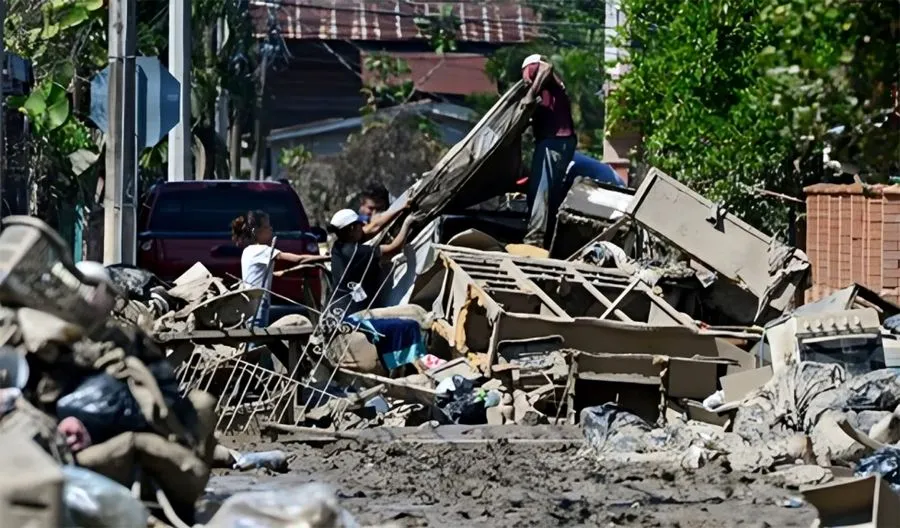 @ecapra.org
@ecapra.org
Survivors vividly recalled battling for breath as mud began to engulf them. Many found themselves trapped, helpless in darkness, as they waited days for rescue teams to arrive. The fear of dying buried alive haunted the survivors long after the storm passed. Iota caused significant damage in both Nicaragua and Colombia, with over 500,000 people affected.
Hurricane Eta (2020)
Hurricane Eta struck Central America as a Category 4 storm, bringing catastrophic floods and landslides to Honduras, Nicaragua, and Guatemala. In Nicaragua, communities were buried under debris as rivers overflowed and homes were swept away.
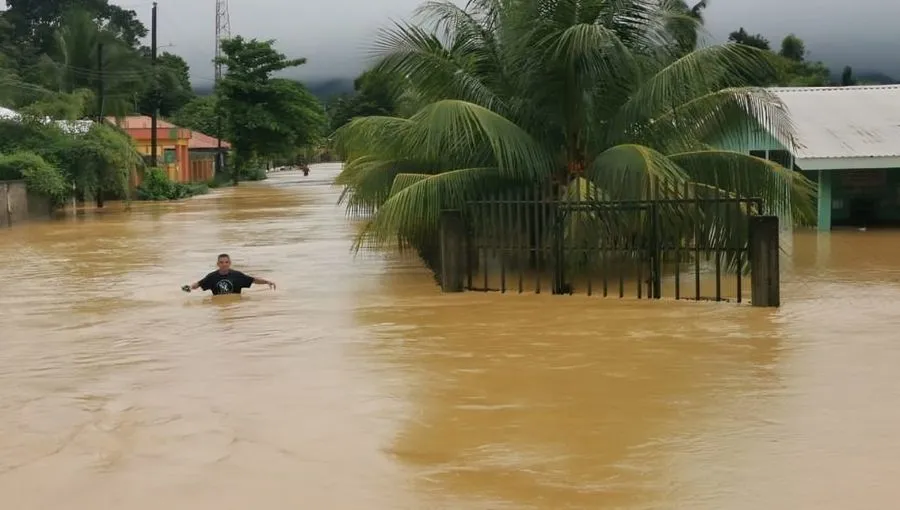 @uusc.org
@uusc.org
Survivors clung to rooftops for days, waiting for help that was slow to come. The storm caused over 200 deaths, and in Guatemala, entire villages were swallowed by landslides. Eta’s destruction led to $7 billion in damages!
Hurricane Ida (2021)
Hurricane Ida made headlines in August 2021 as it barreled into Louisiana, packing winds of 150 mph. What set Ida apart wasn’t just its strength; it was the sheer devastation it left in its wake.
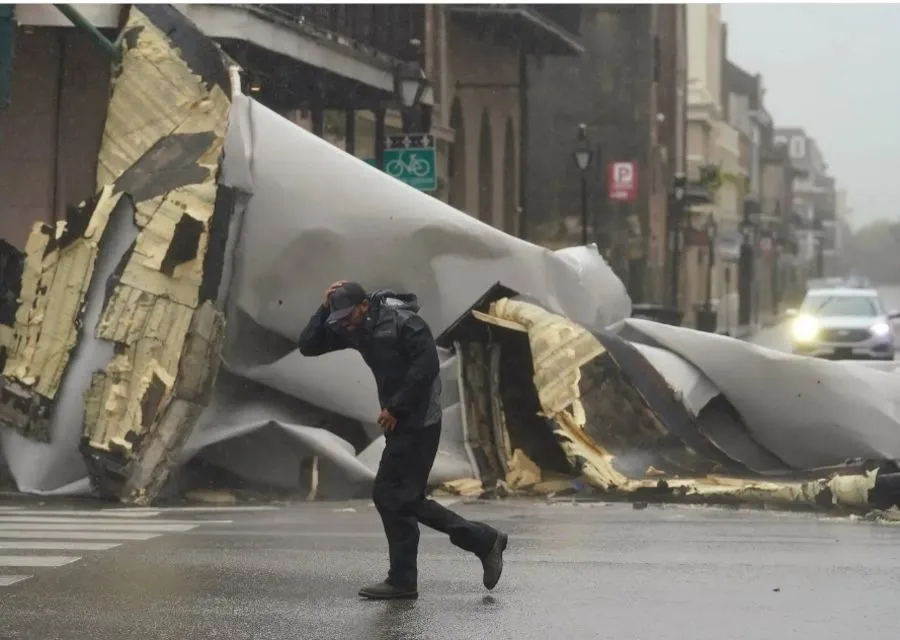 @Eric Gay/AP
@Eric Gay/AP
The storm plunged New Orleans into darkness and brought unprecedented flooding to New York and New Jersey, revealing the region's vulnerabilities to severe weather. With a death toll of at least 95 and damages estimated at a staggering $75 billion, Ida served as real horror!
Hurricane Ian (2022)
In late September 2022, Hurricane Ian wreaked havoc on Florida, making landfall as a powerful Category 4 hurricane. What made Ian particularly notorious was its sheer ferocity and the extensive flooding it unleashed, particularly in Fort Myers.
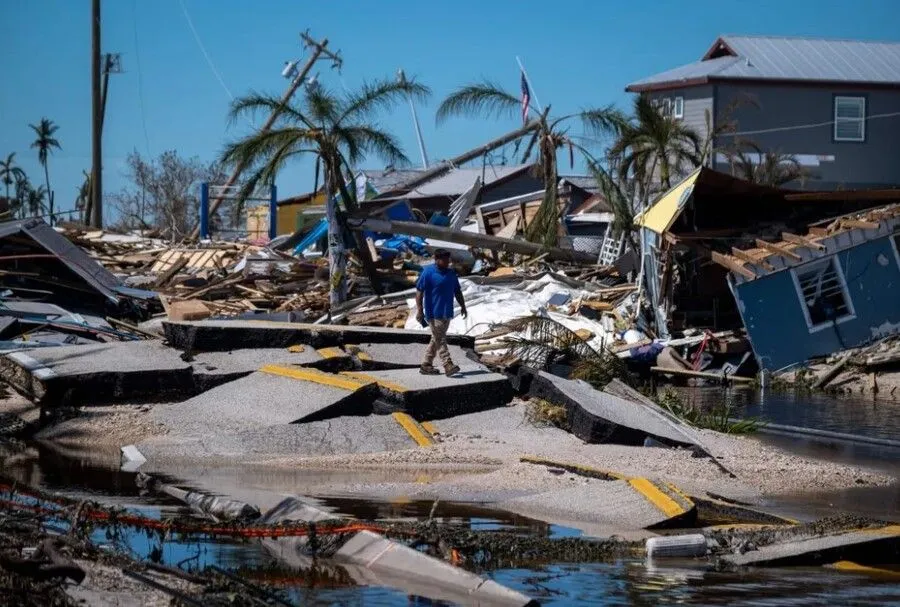 @Ricardo Arduengo/AFP
@Ricardo Arduengo/AFP
The storm surge overwhelmed the coastal communities, leading to over 150 fatalities and catastrophic damage estimated at $112 billion.
Hurricane Nicole (2022)
Just weeks after Hurricane Ian, Hurricane Nicole hit Florida in November 2022, reminding residents that the storm season was far from over. While it was a Category 1 hurricane, Nicole's winds and rainfall compounded the challenges faced by regions still recovering from Ian.
 @ Zack Wittman for The New York Times
@ Zack Wittman for The New York Times
Coastal erosion and flooding severely impacted already weakened infrastructure. The storm reinforced the idea that consecutive hurricanes could lead to compounded damage...
Hurricane Fiona (2022)
When Hurricane Fiona hit Puerto Rico in September 2022, it wasn't the wind that caused the most damage—it was the rain. With more than 30 inches of rainfall in some areas, Fiona brought back painful memories of Hurricane Maria's devastation five years earlier.
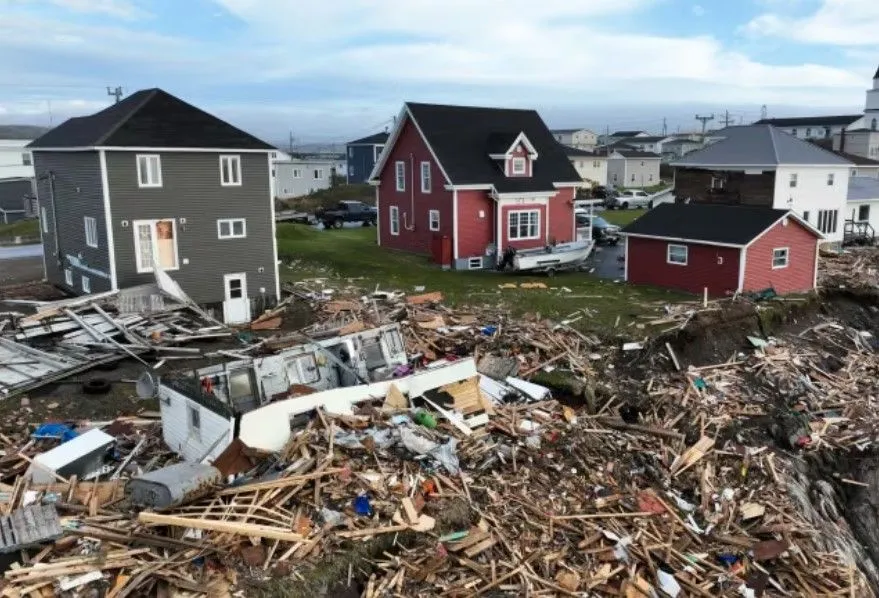 @Yan Theoret/CB
@Yan Theoret/CB
Entire communities were submerged, and widespread power outages once again plunged the island into darkness. “It felt like Maria all over again,” one resident shared, saying about that nightmare.
Typhoon Nanmadol (2022)
In September 2022, Typhoon Nanmadol slammed into Japan as one of the strongest storms in the country’s recent history. Winds of 140 mph and torrential rains caused landslides, flooding, and extensive damage to homes.
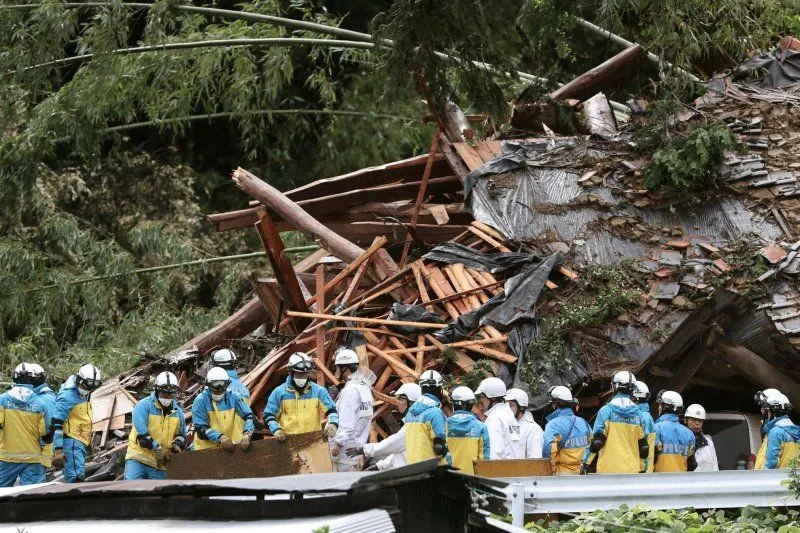 @Jiji Press/EPA-EFE
@Jiji Press/EPA-EFE
With over 9 million people evacuated ahead of the storm, survivors described the scene as “apocalyptic,” with entire towns disappearing under mudslides. Emergency services struggled to respond!
Hurricane Julia (2022)
Hurricane Julia swept across Central America in October 2022, causing widespread devastation from Nicaragua to Guatemala. Despite making landfall as a Category 1 storm, Julia triggered deadly flash floods and landslides.
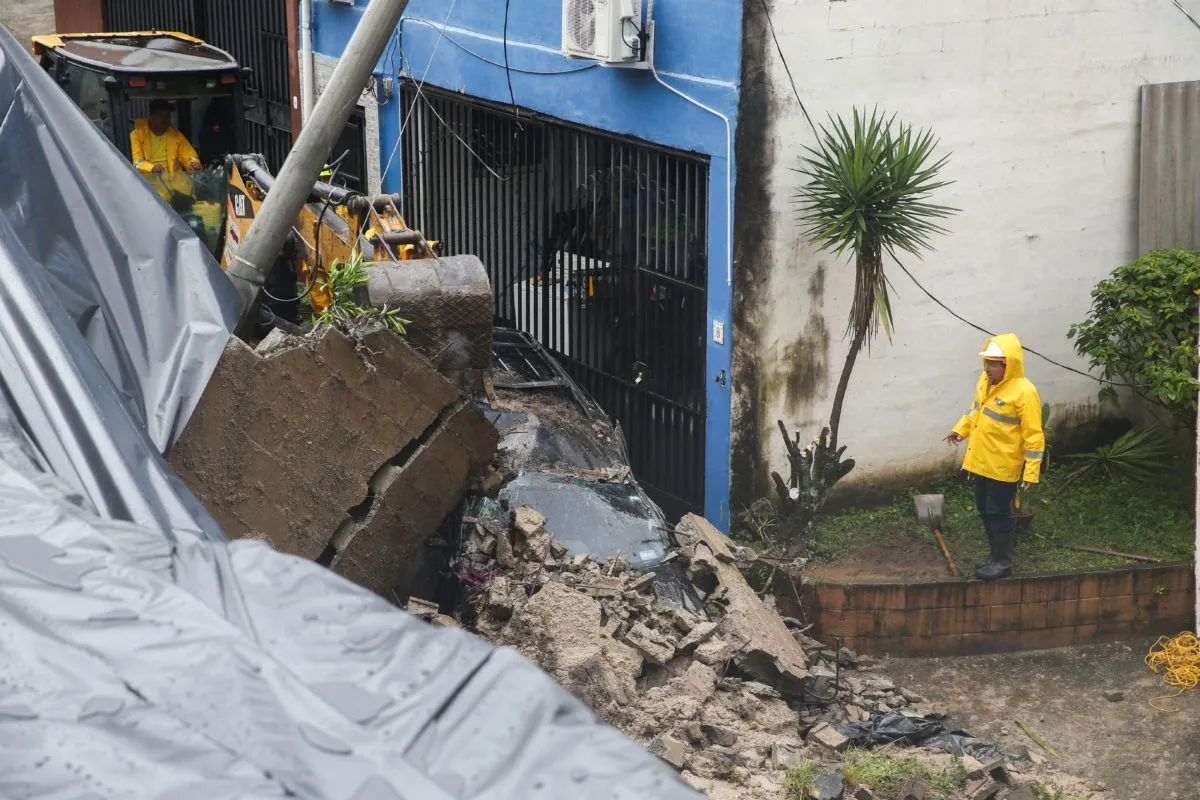 @PBSNews
@PBSNews
Over 80 people died across the region. Survivors shared stories of waking up to flooded homes and roads turned into rivers, with many left stranded for days before rescue teams could reach them. Julia’s impact was a reminder of how even weaker hurricanes can bring deadly consequences.
Hurricane Roslyn (2022)
In late October 2022, Hurricane Roslyn struck Mexico’s Pacific coast as a Category 3 storm. With winds reaching up to 120 mph, Roslyn caused widespread flooding, landslides, and property destruction in coastal areas like Nayarit and Jalisco.
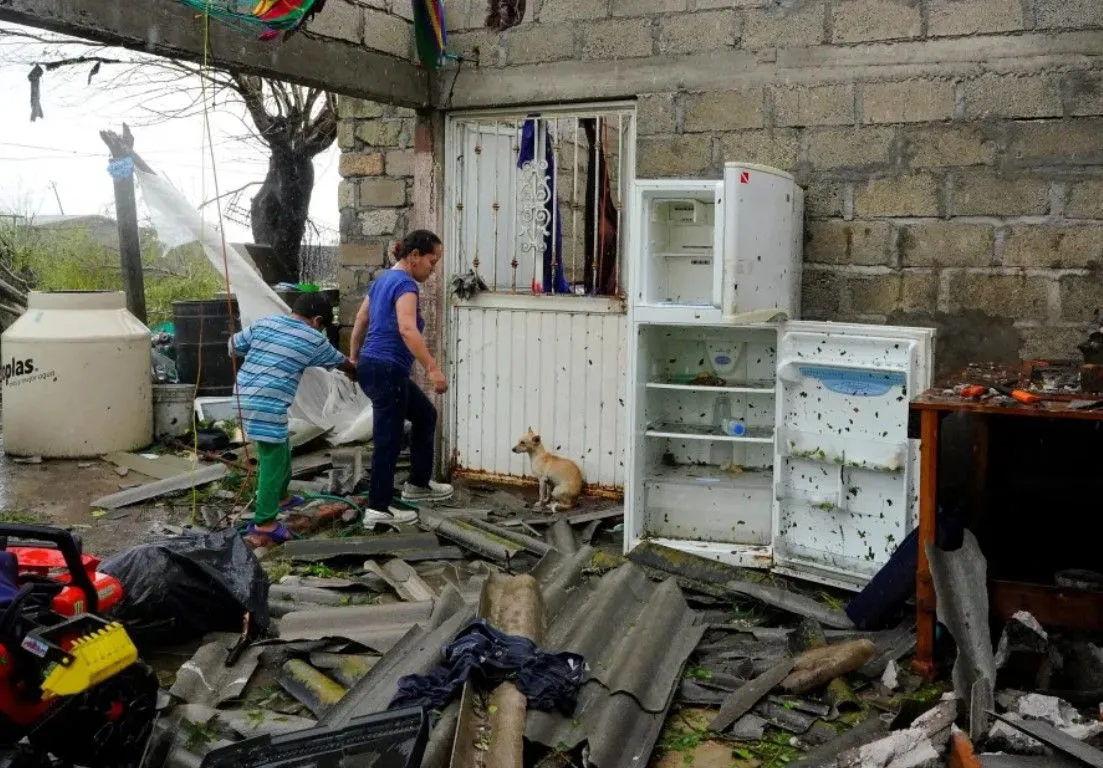 @Christian Garcia/Reuters
@Christian Garcia/Reuters
Many survivors recalled the storm’s power, saying it felt like the sky “tore open,” leaving behind damaged homes and streets covered in debris. Residents described seeking shelter as floodwaters rushed in, forcing families to climb onto rooftops to escape the rising tides.
Cyclone Freddy (2023)
Cyclone Freddy made headlines in 2023 for being one of the longest-lasting tropical cyclones ever recorded. After churning through the Indian Ocean for over a month, Freddy made landfall in Mozambique and Madagascar multiple times, causing severe flooding and displacement of thousands.
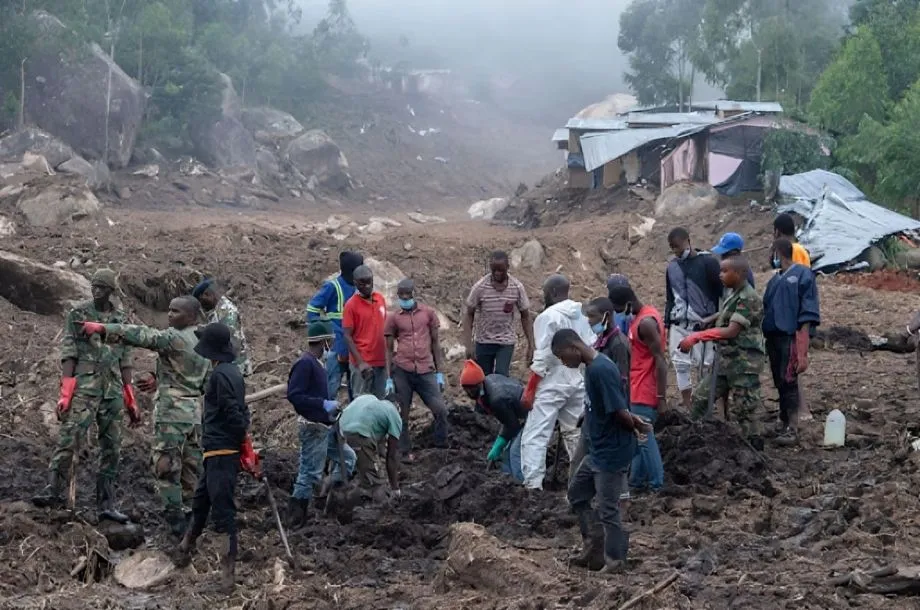 @Bloomberg
@Bloomberg
Survivors in affected areas spoke of relentless rain and winds that seemed never-ending. The cyclone’s continuous looping back toward land kept the region on edge, with some describing it as a “never-ending nightmare”…